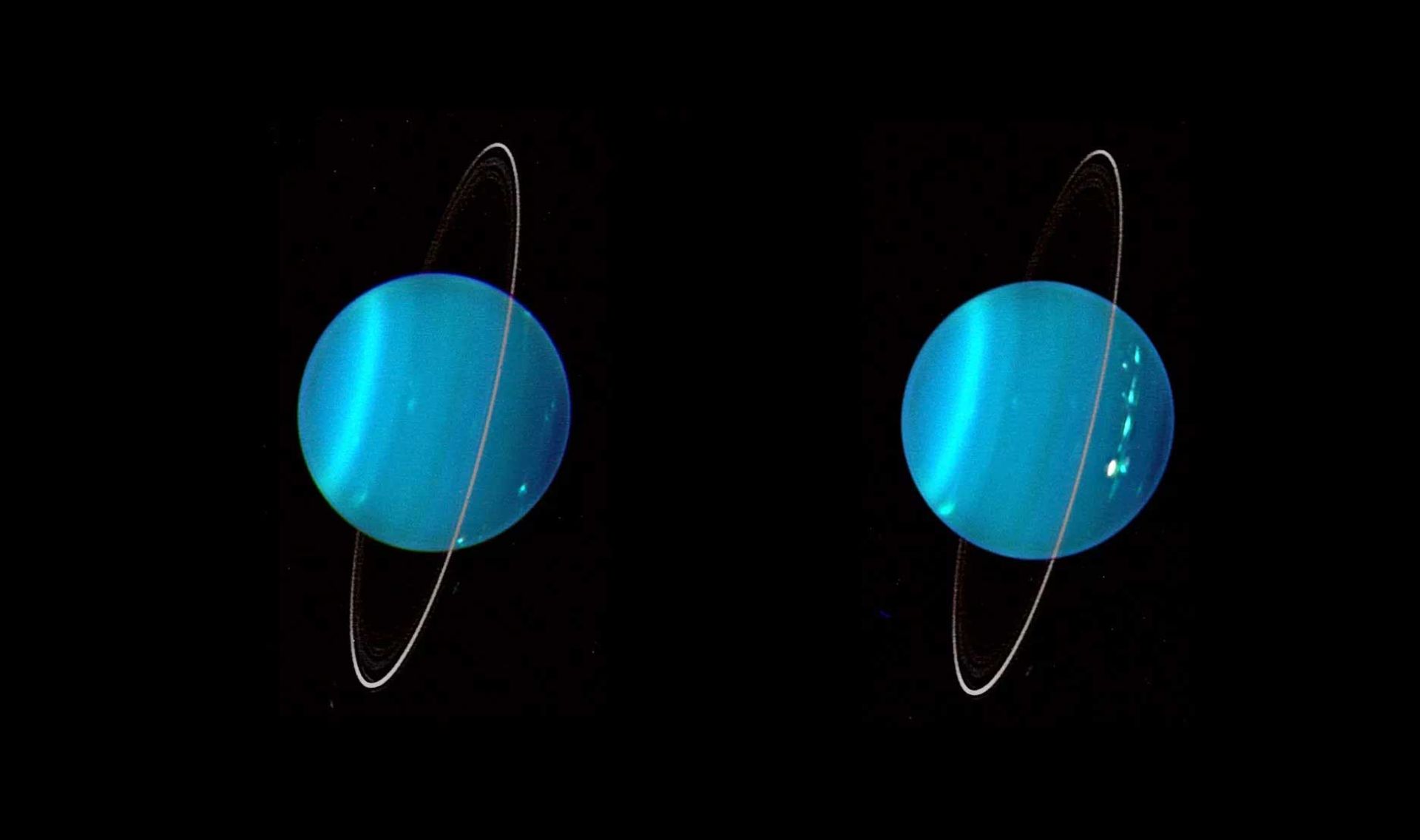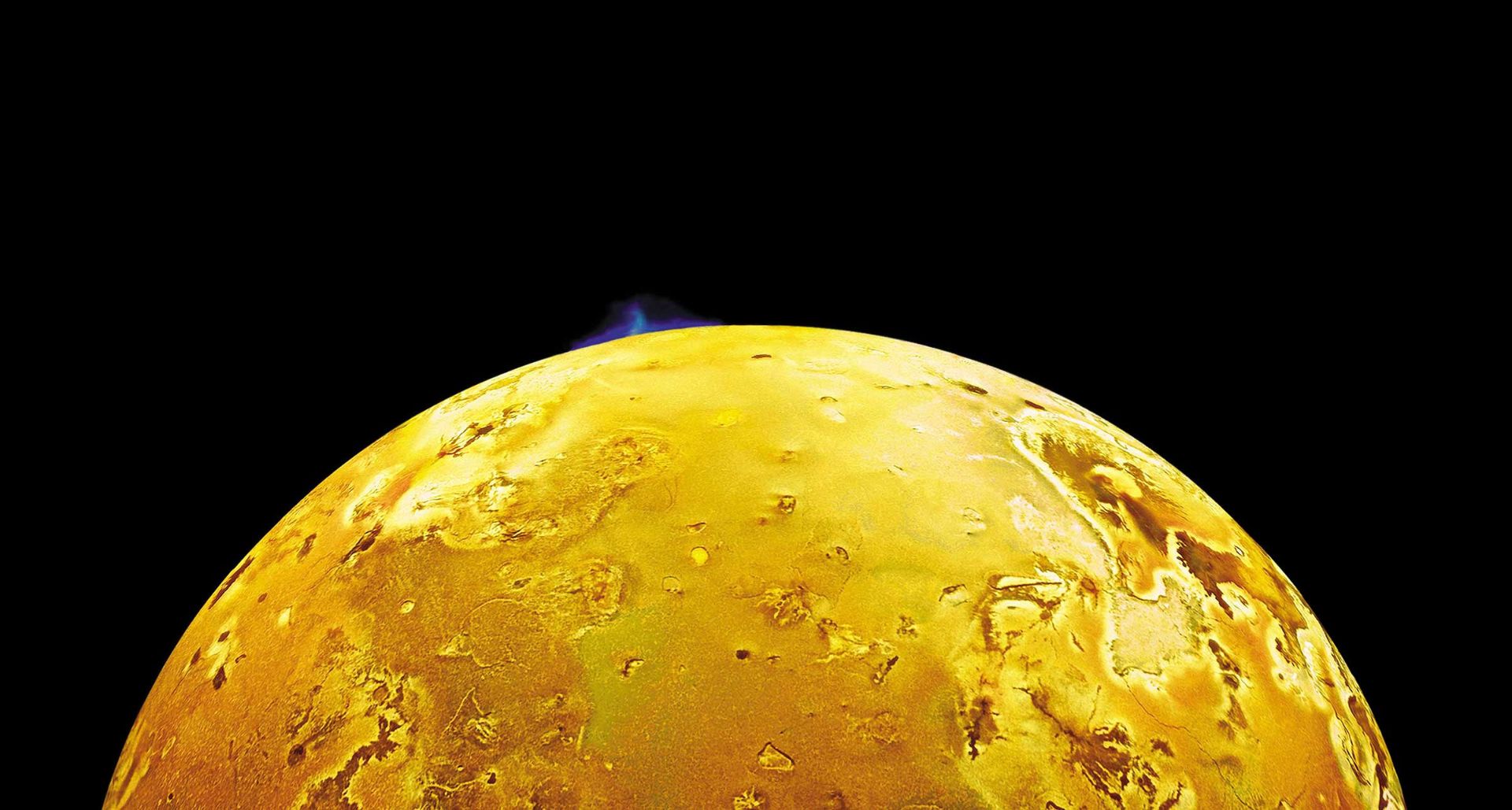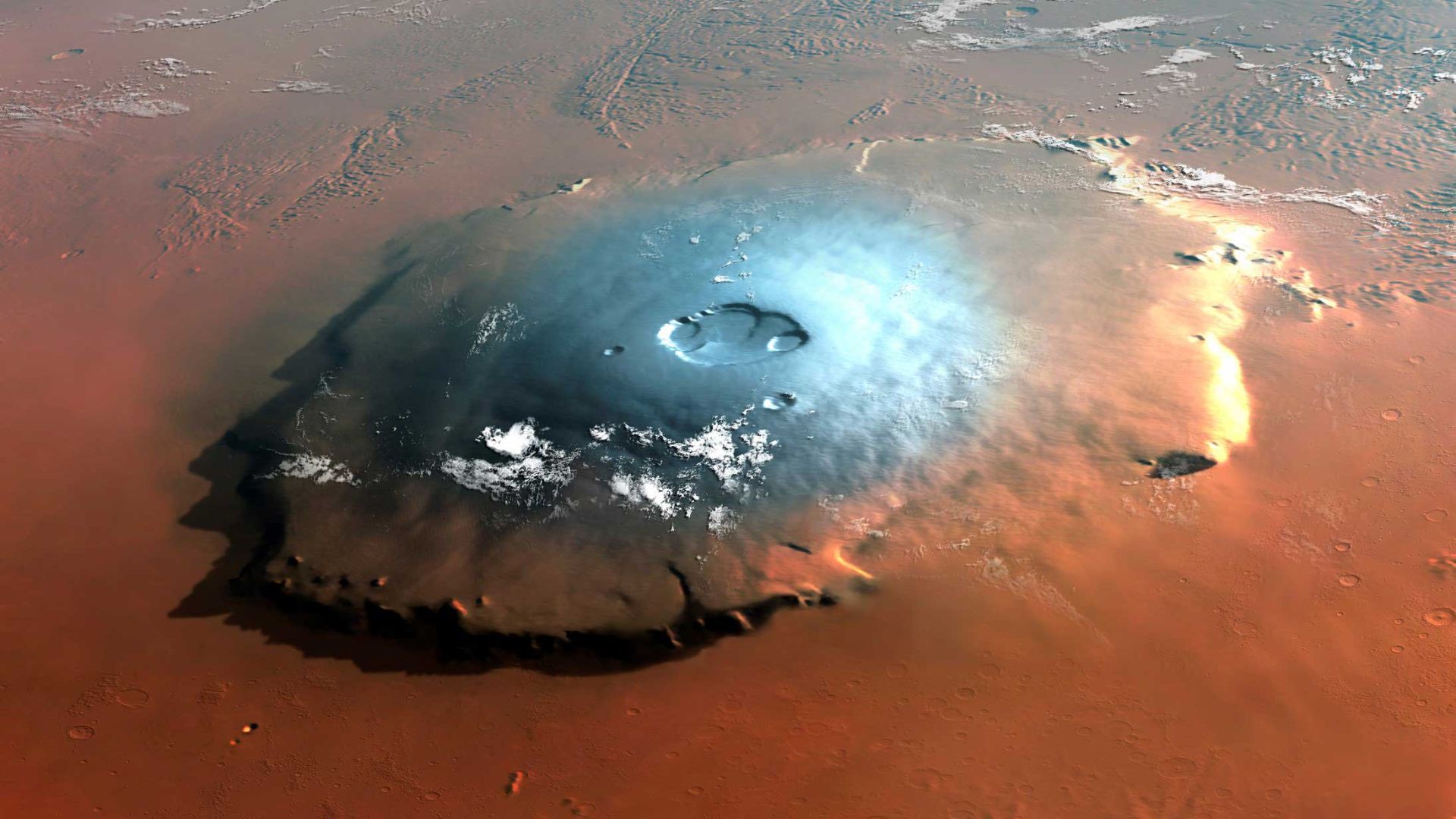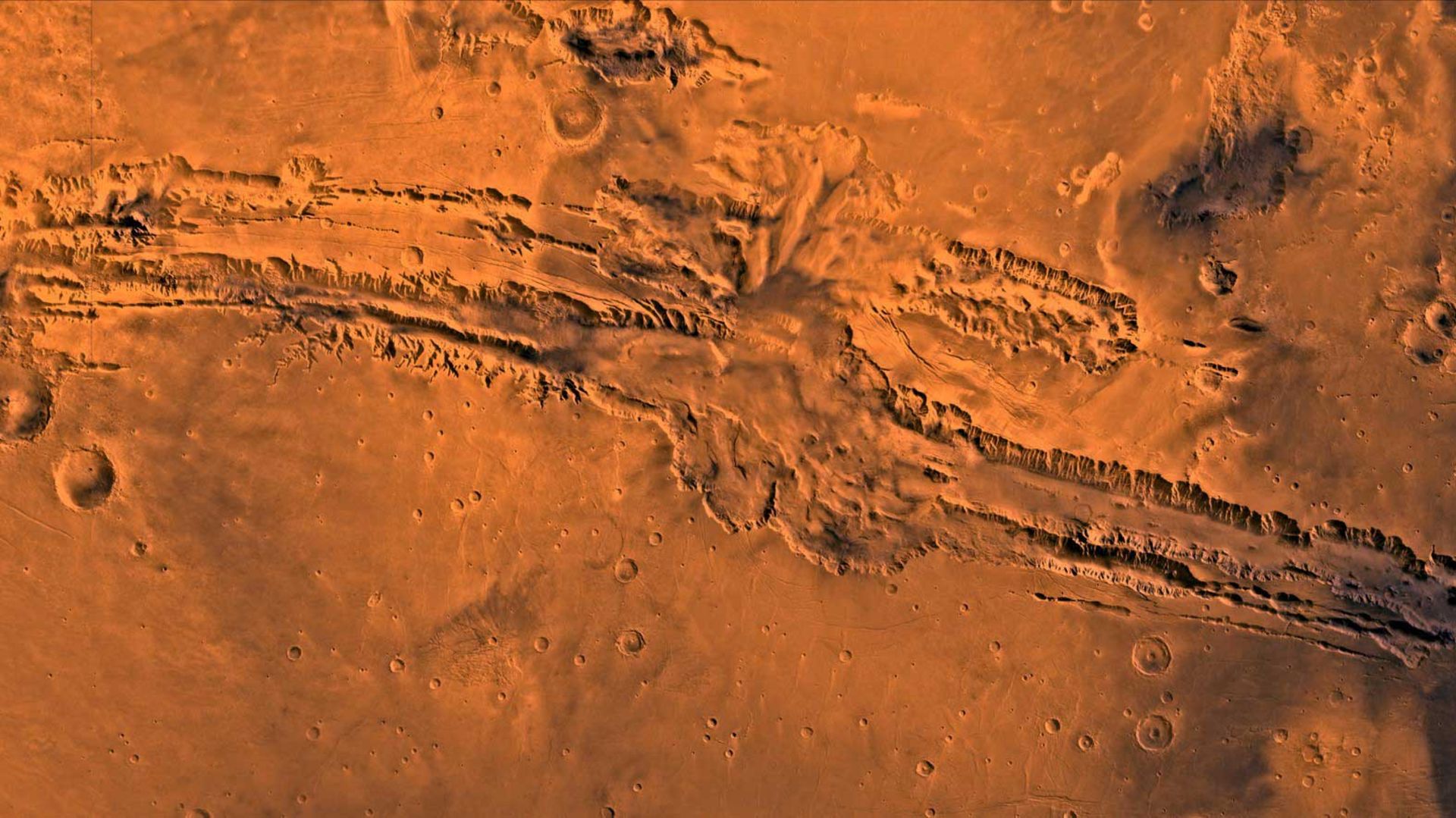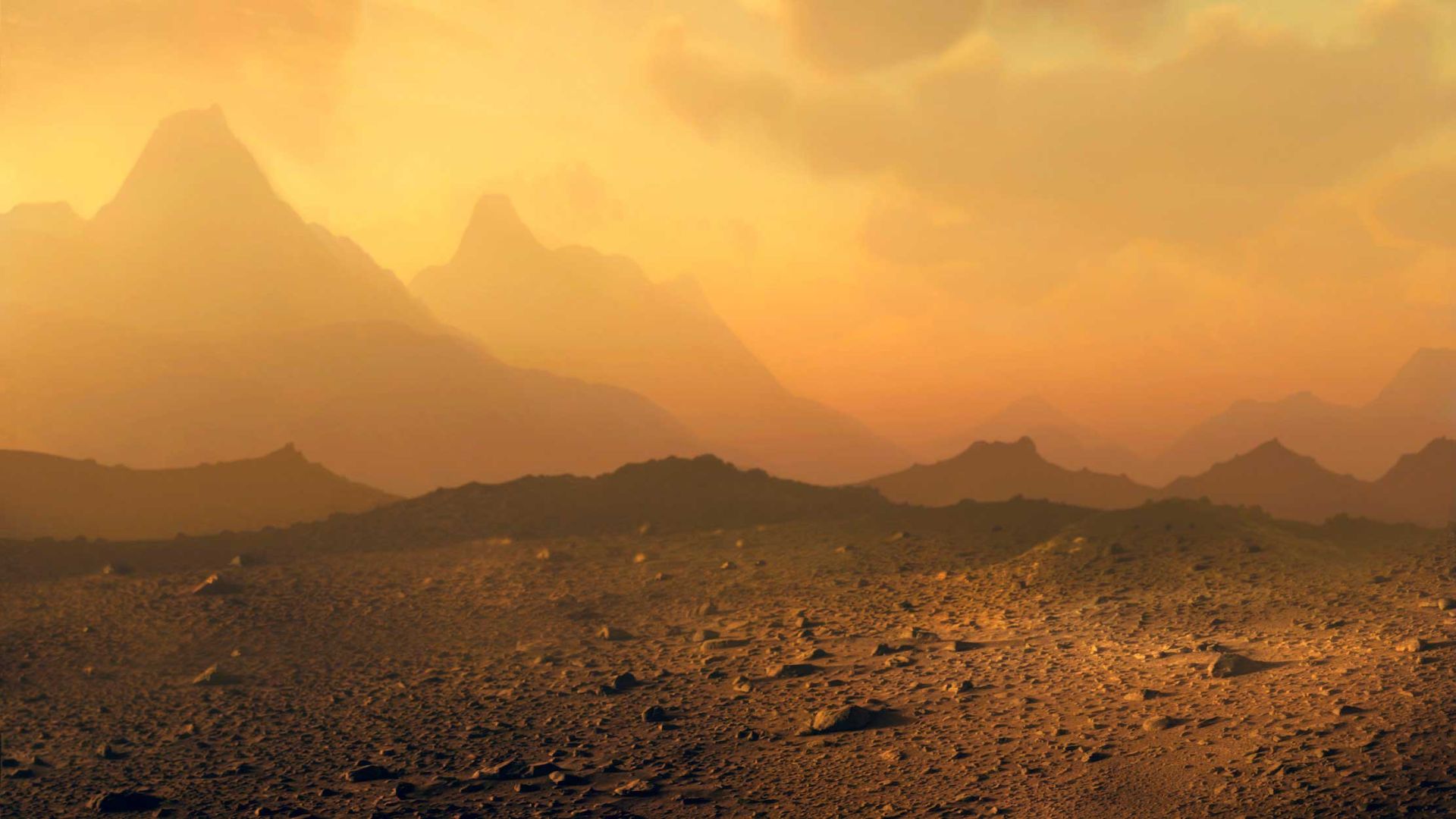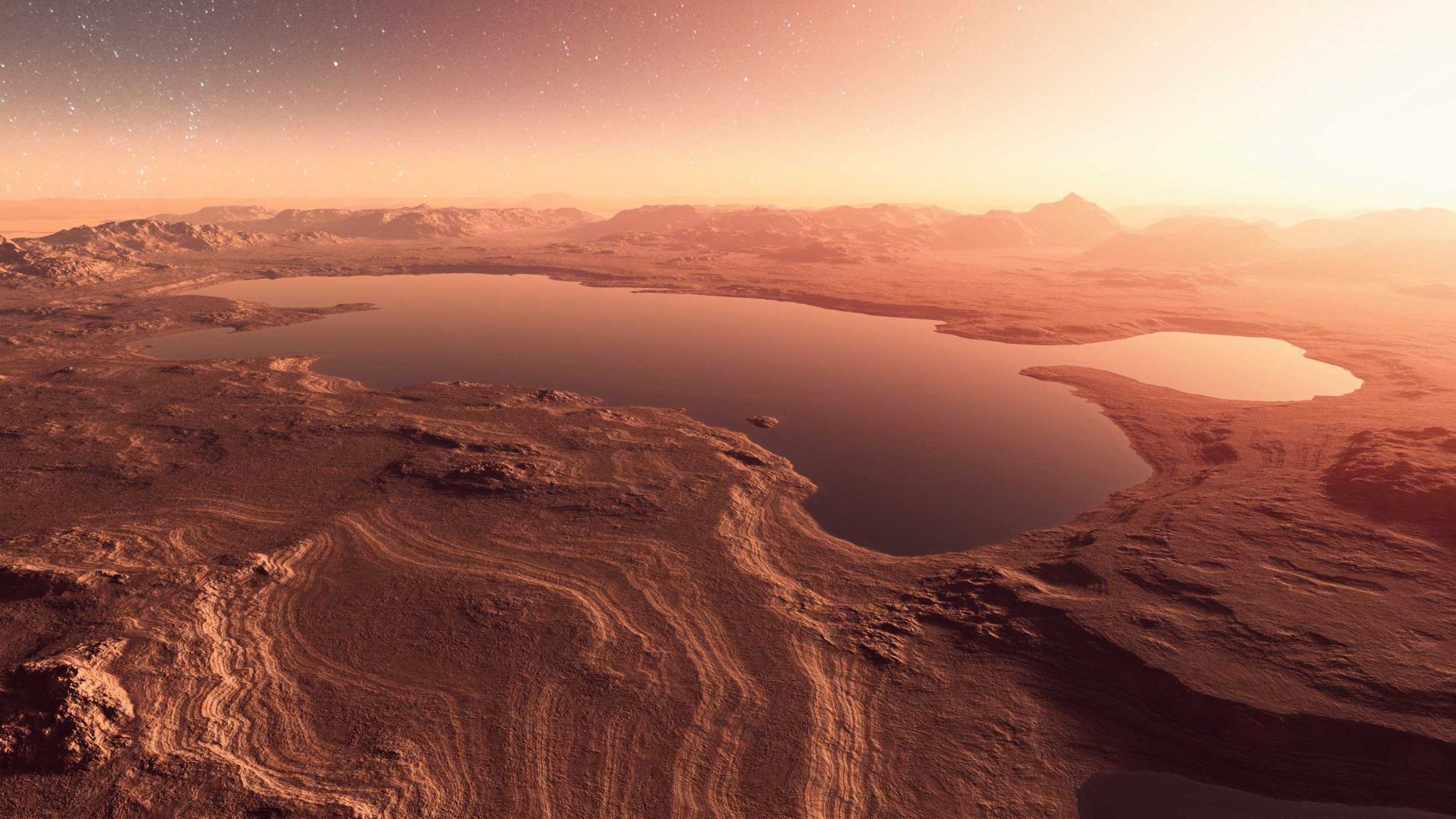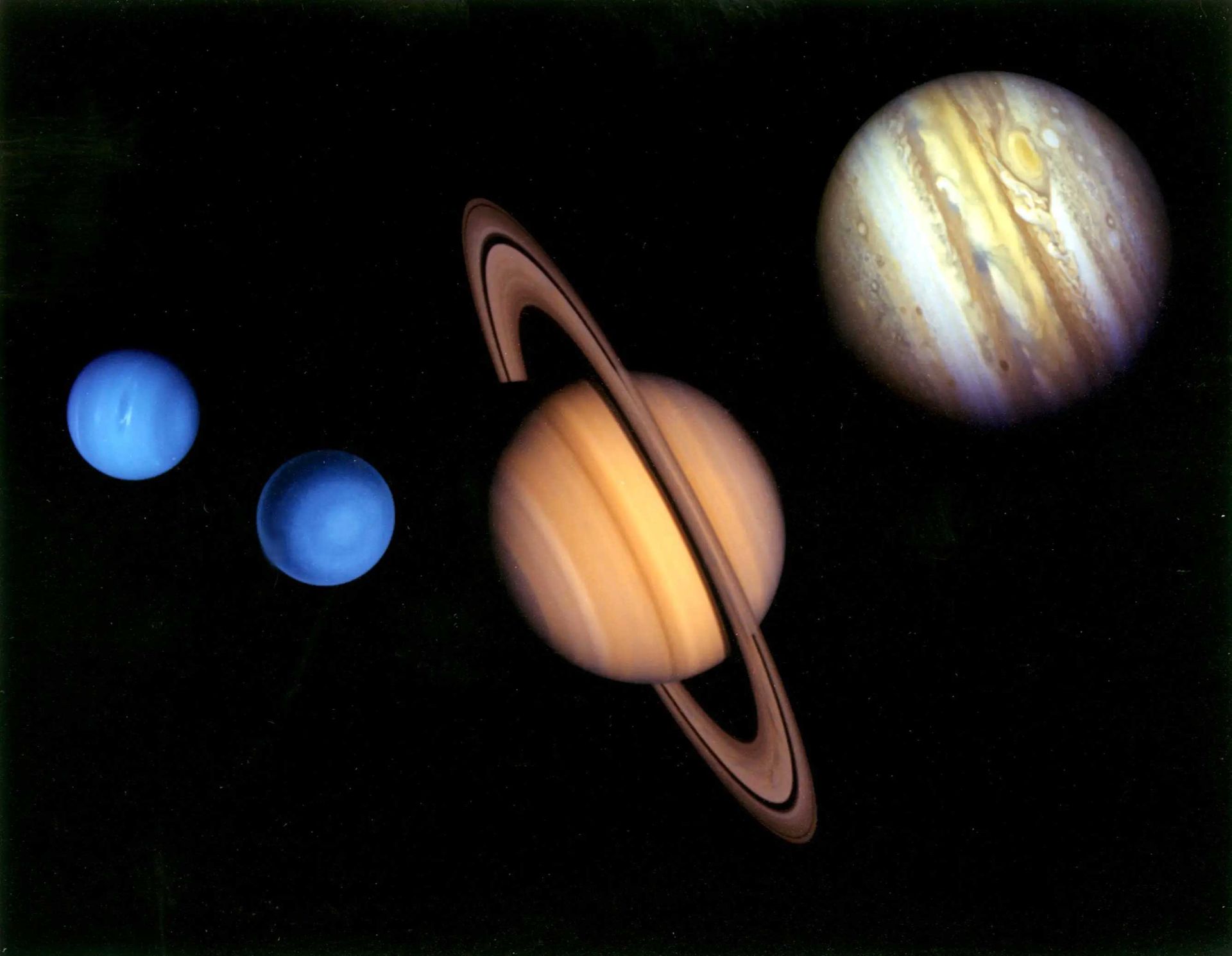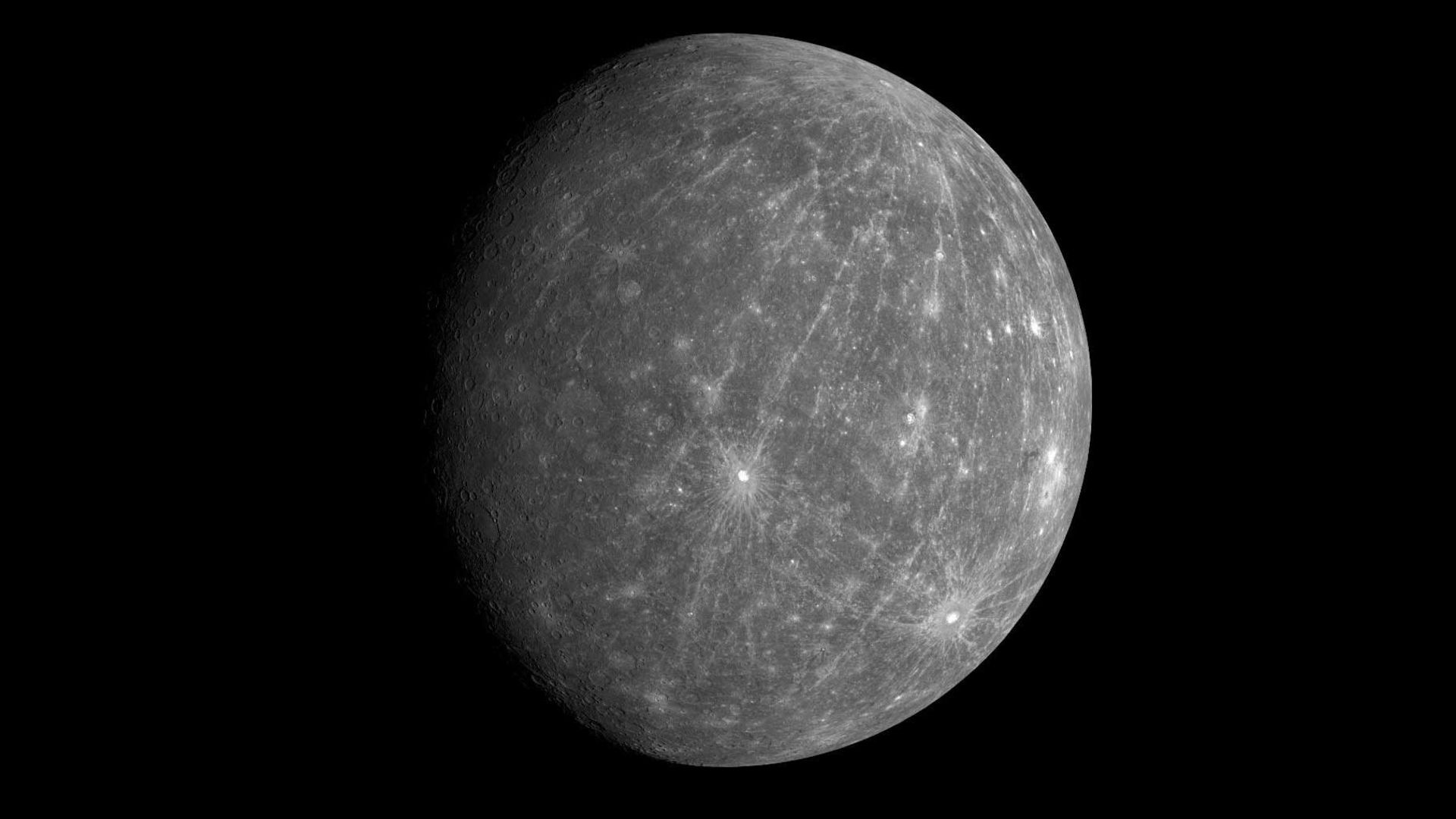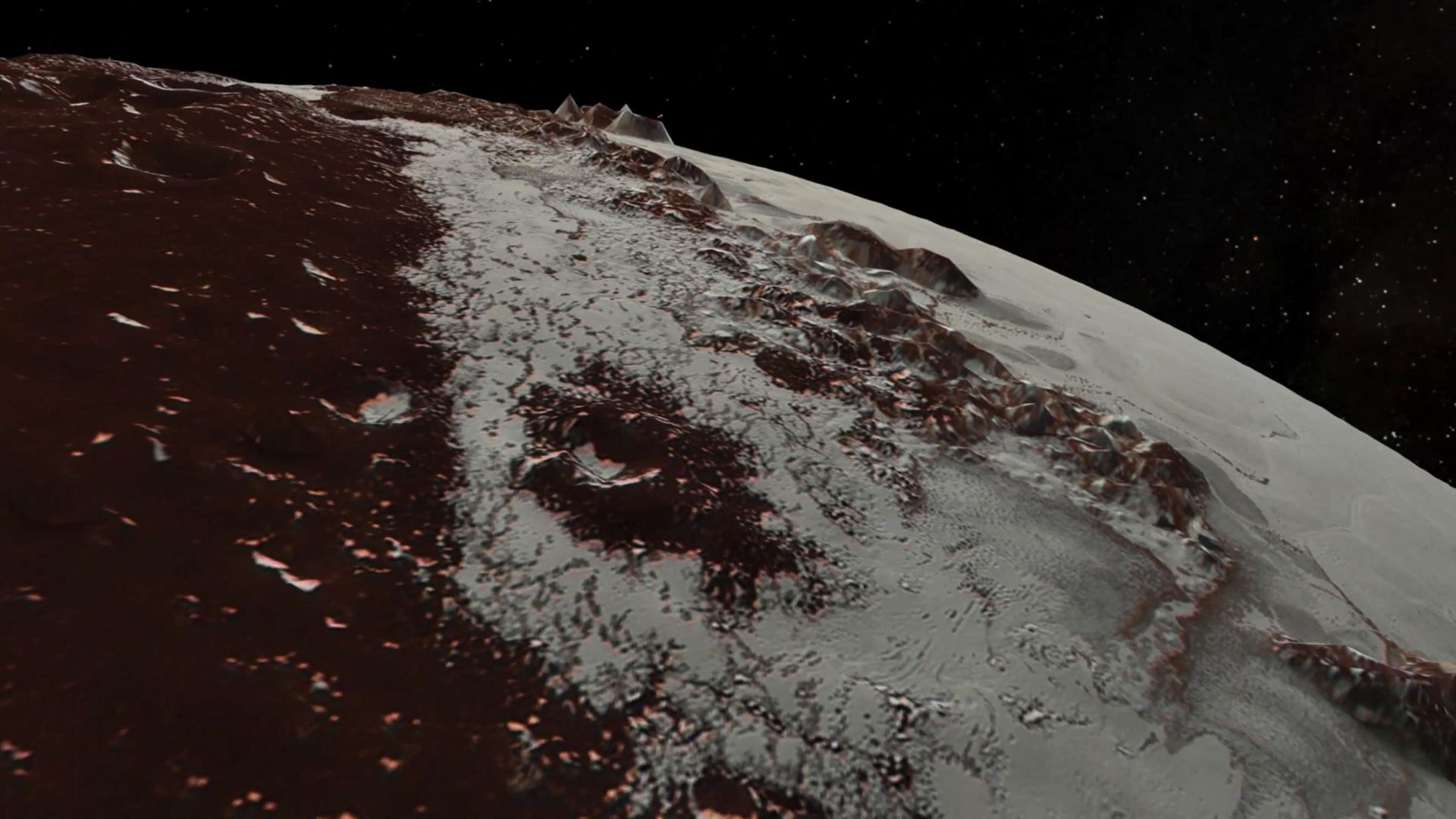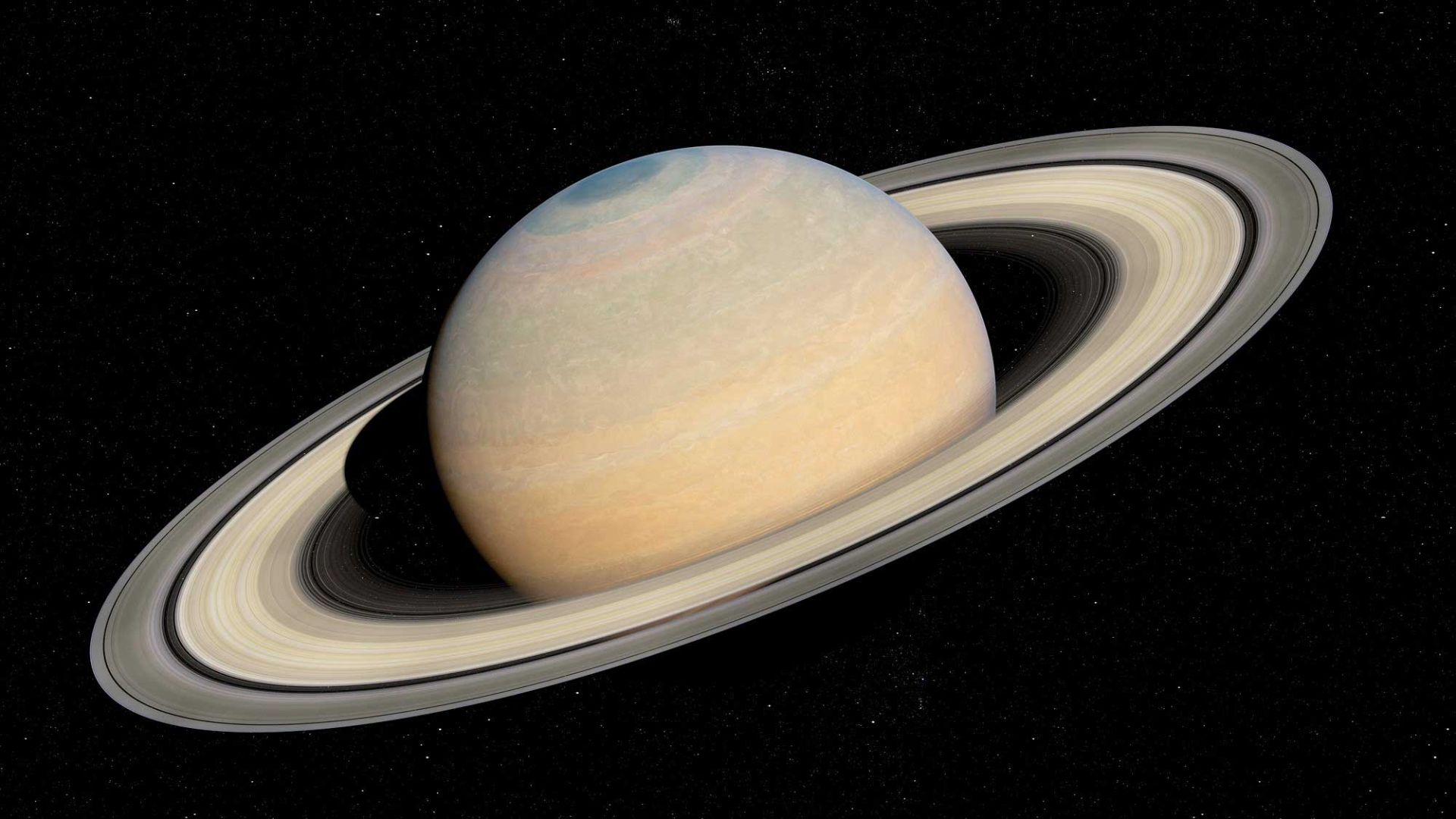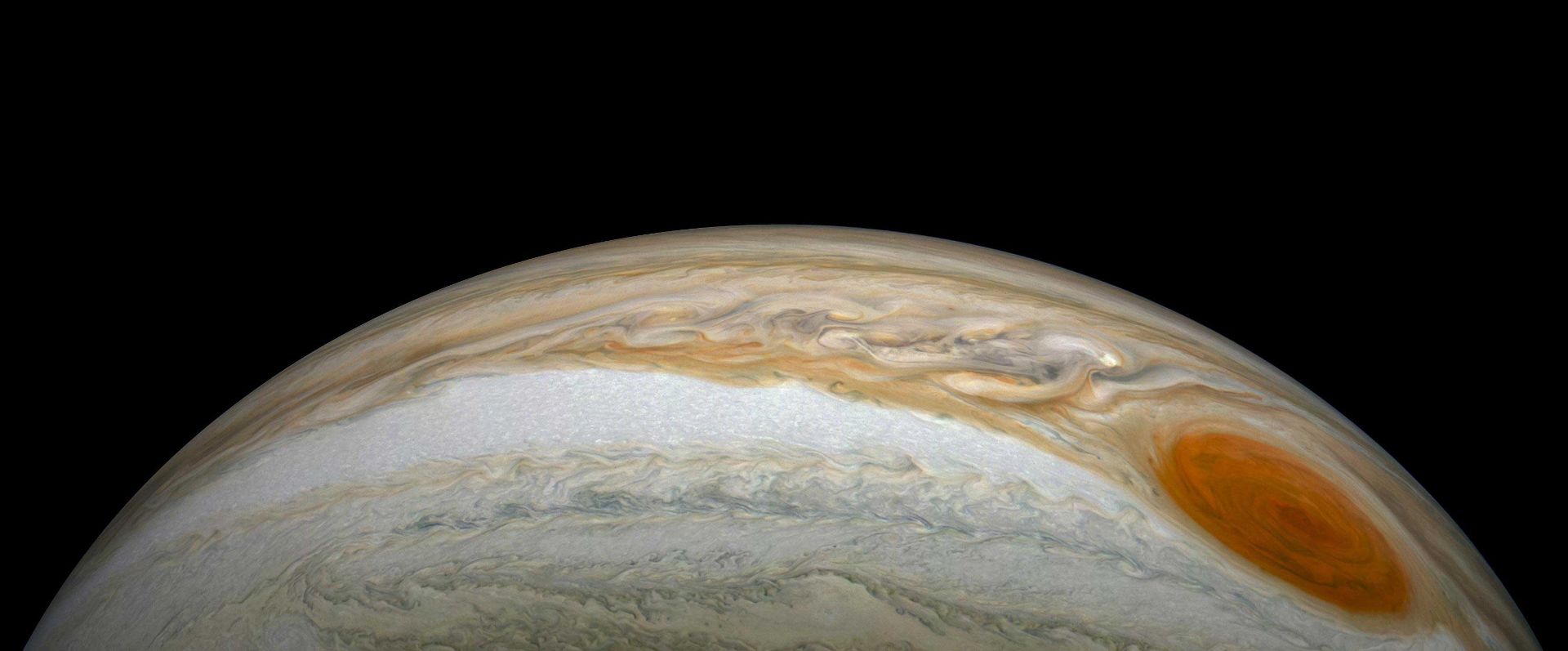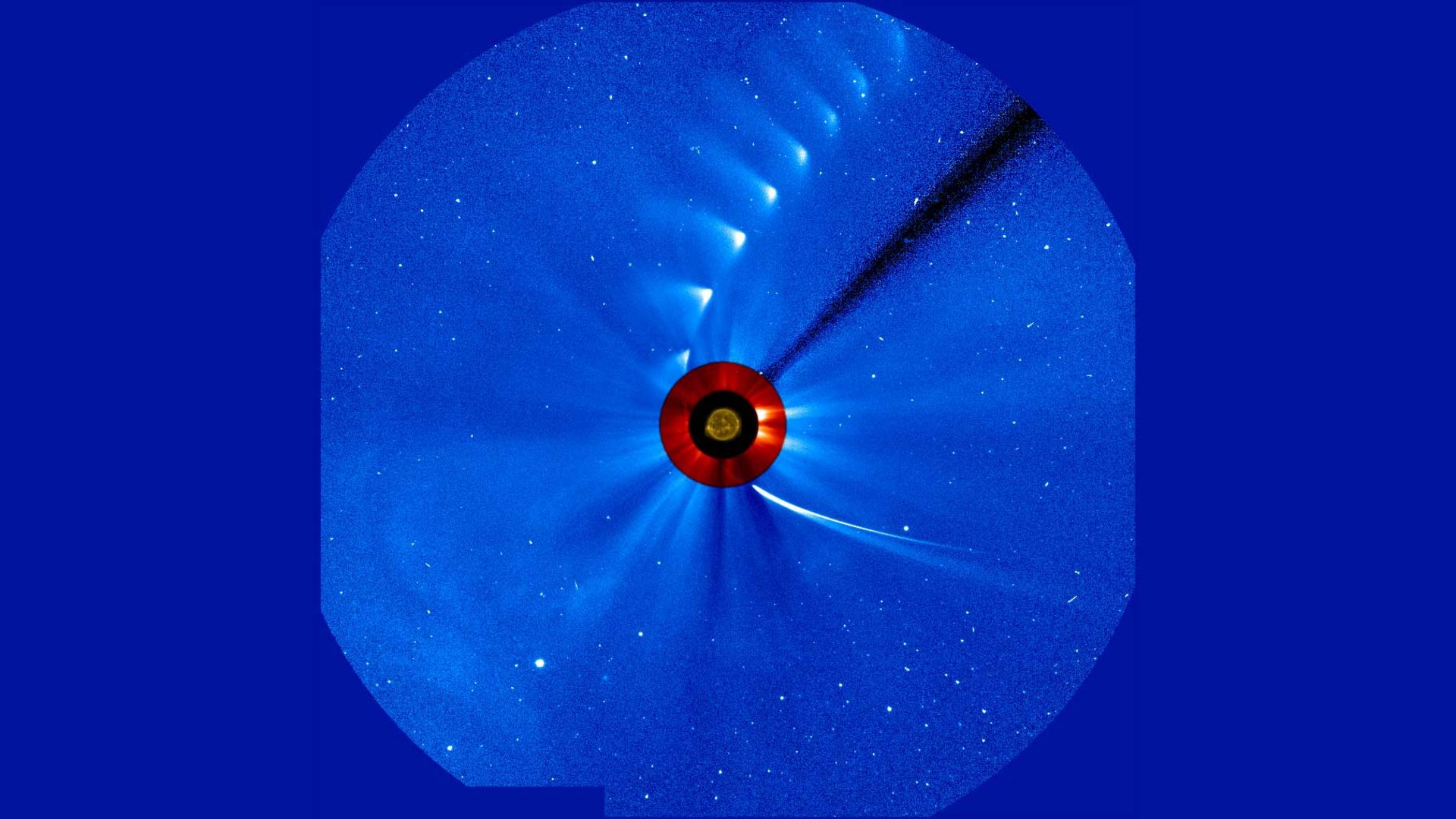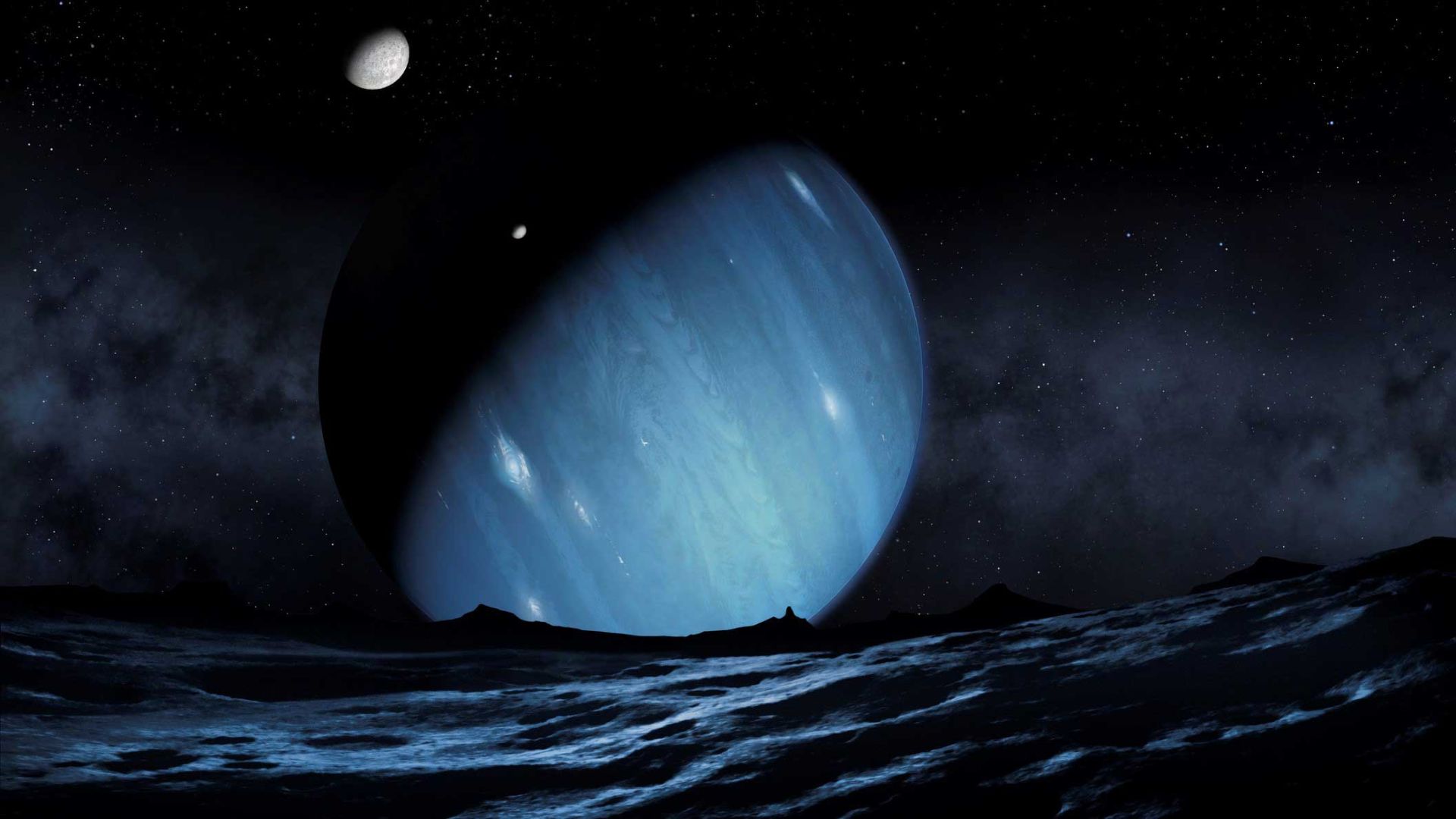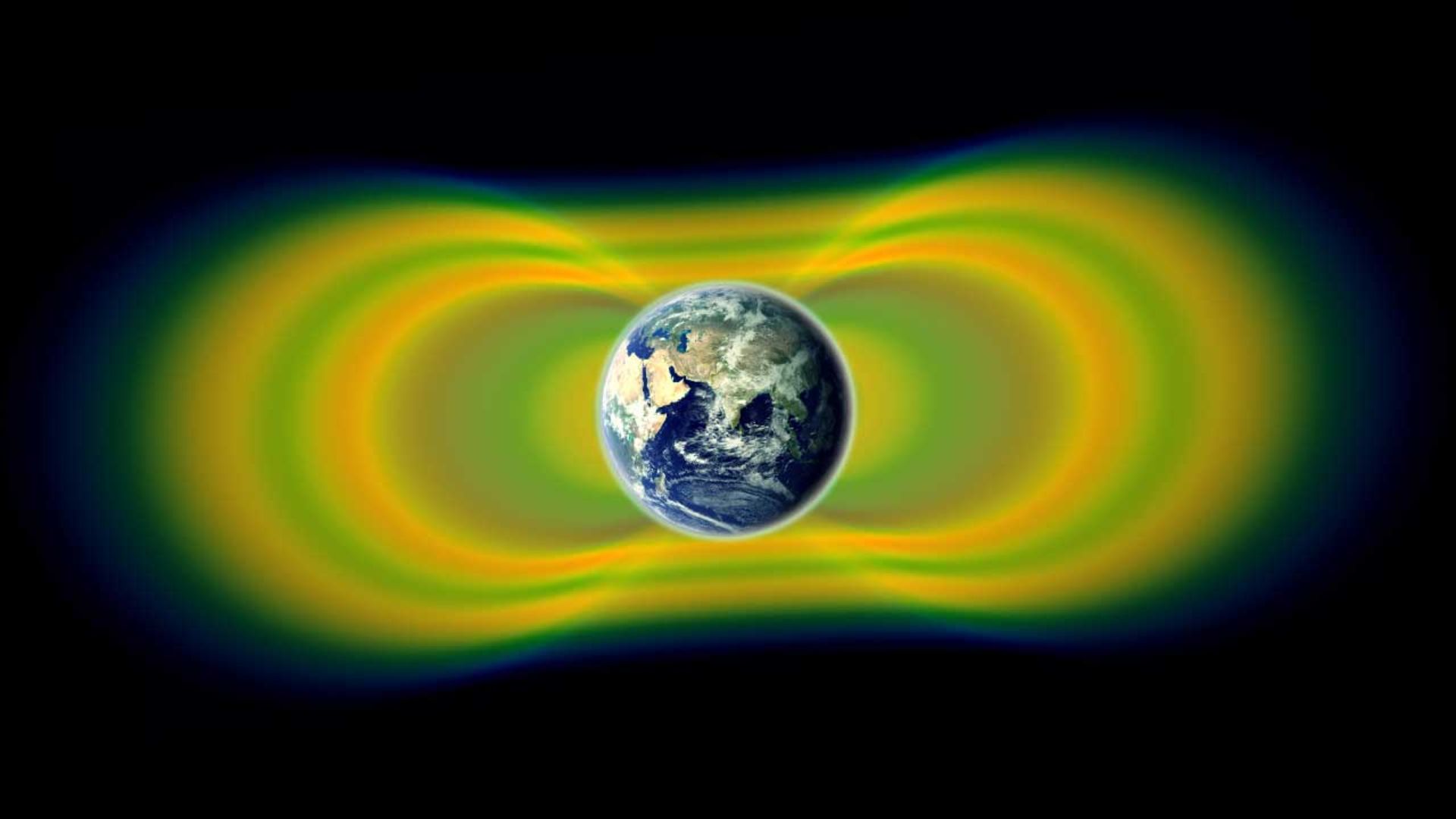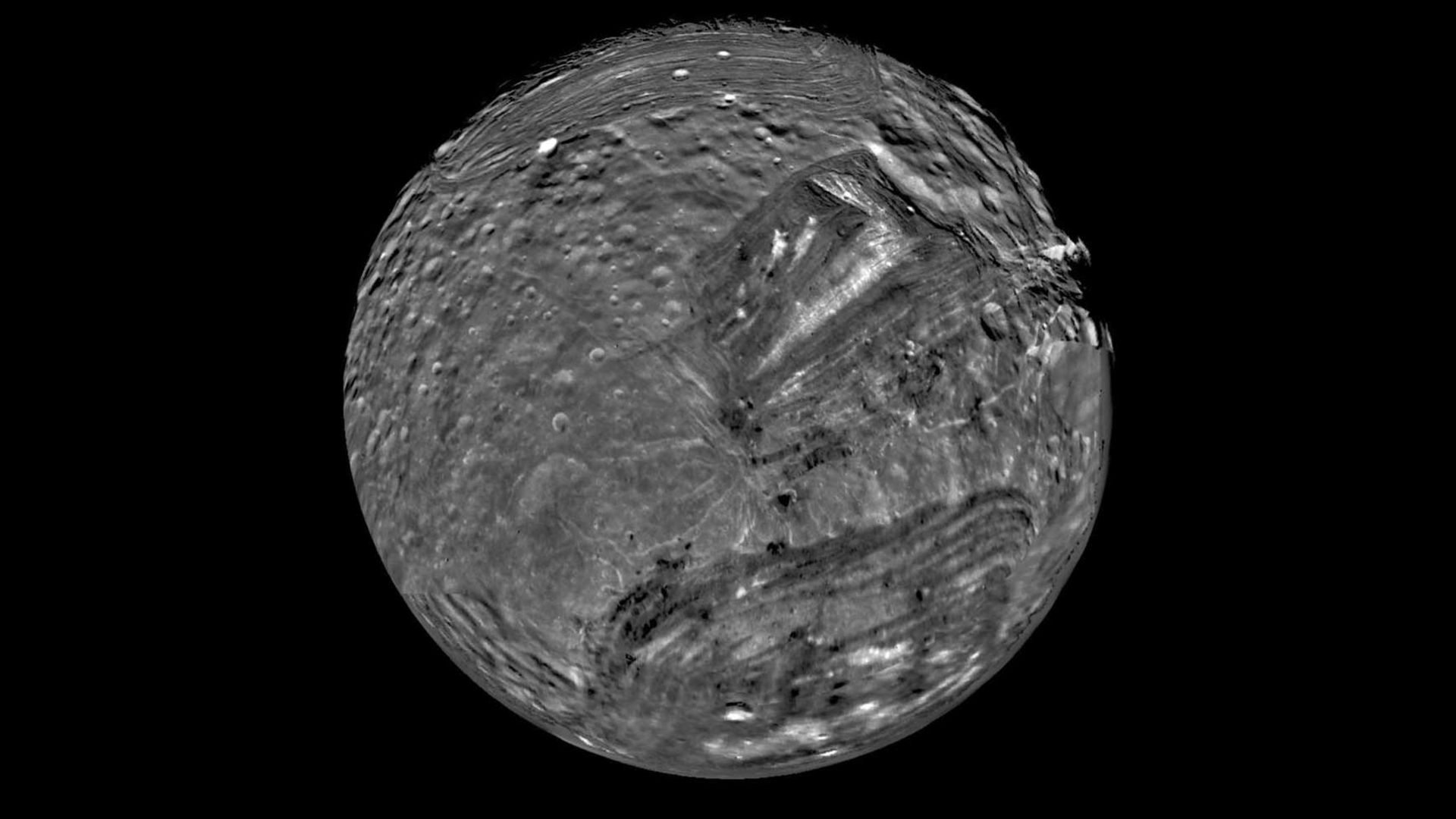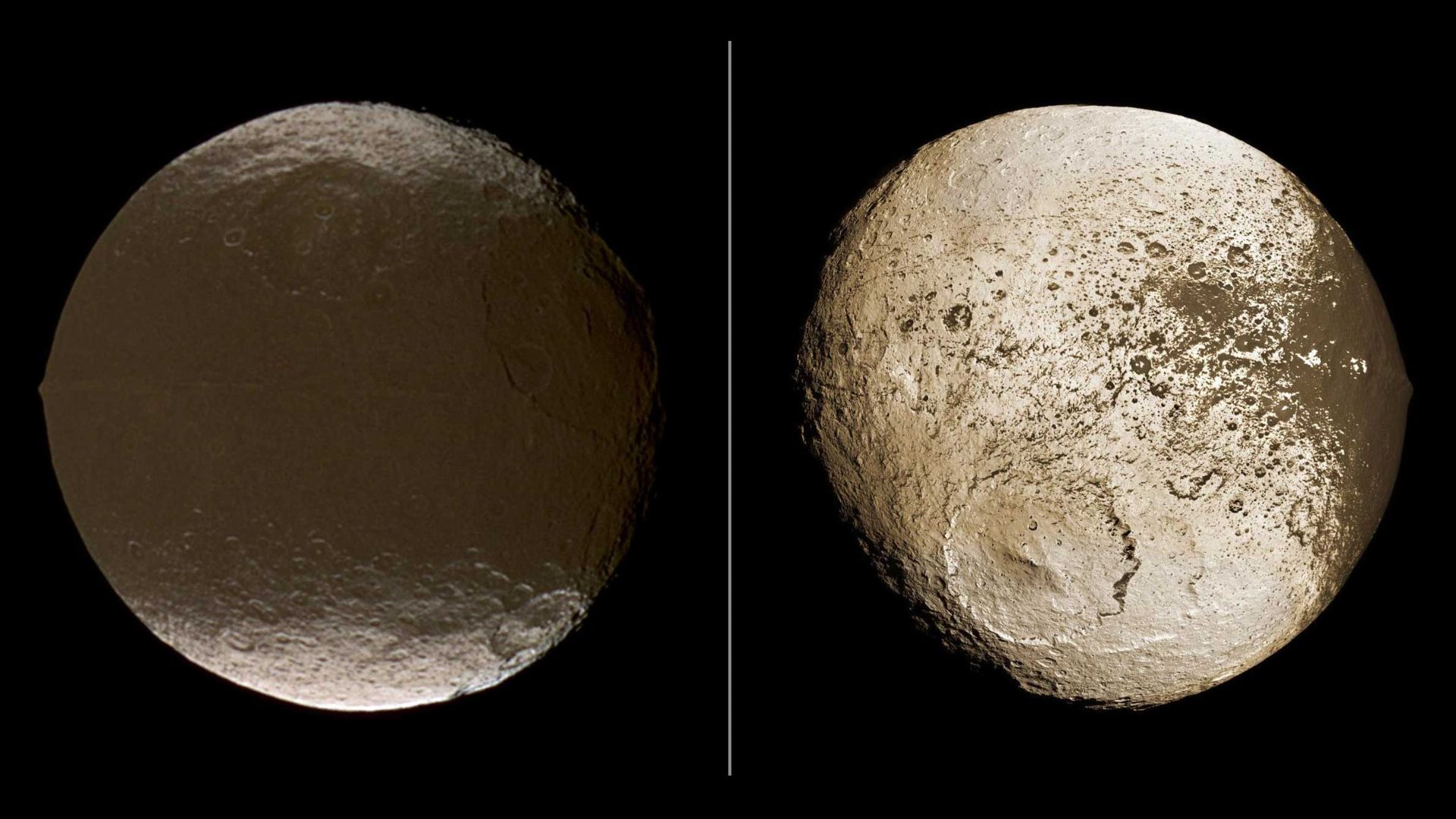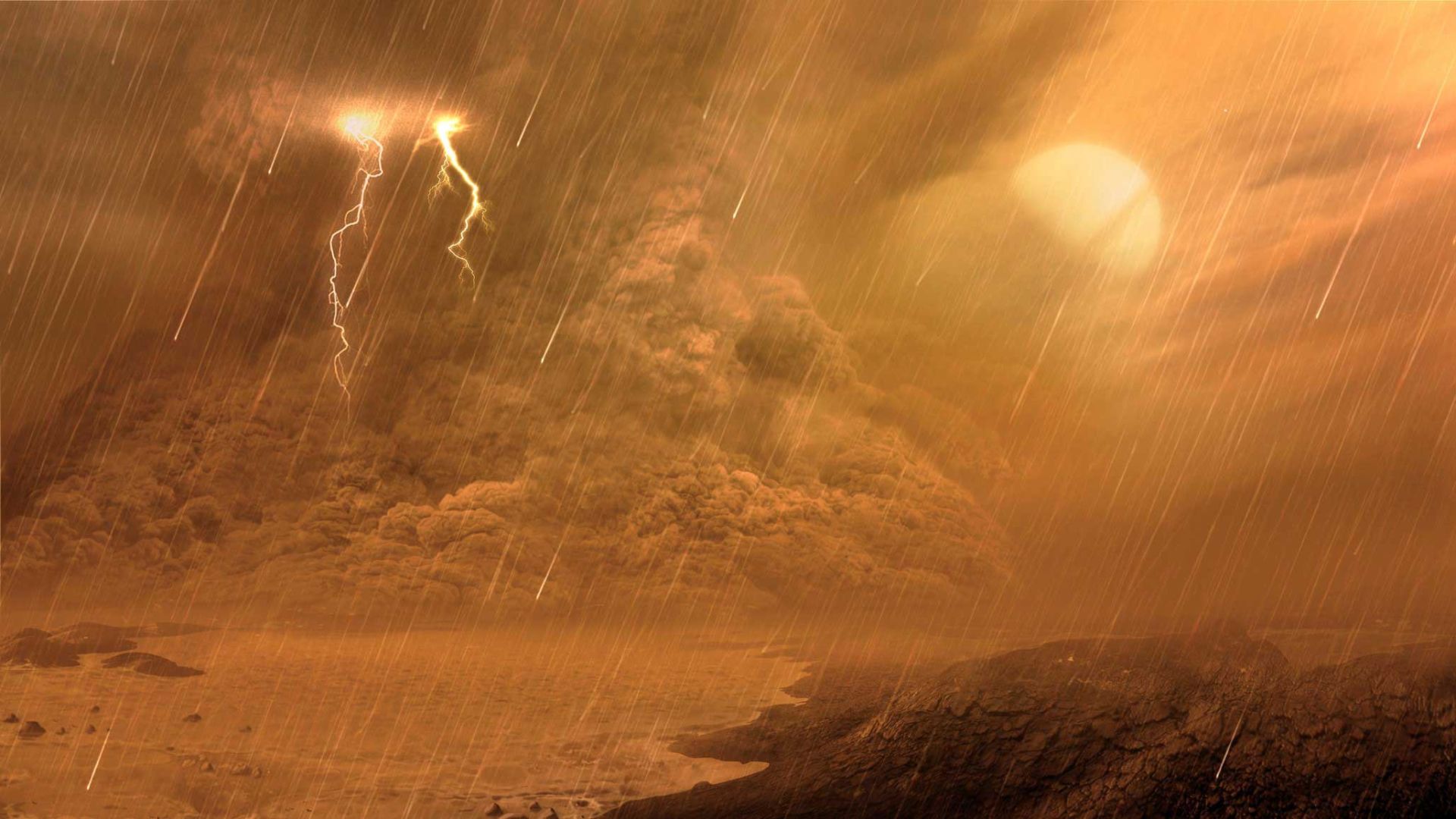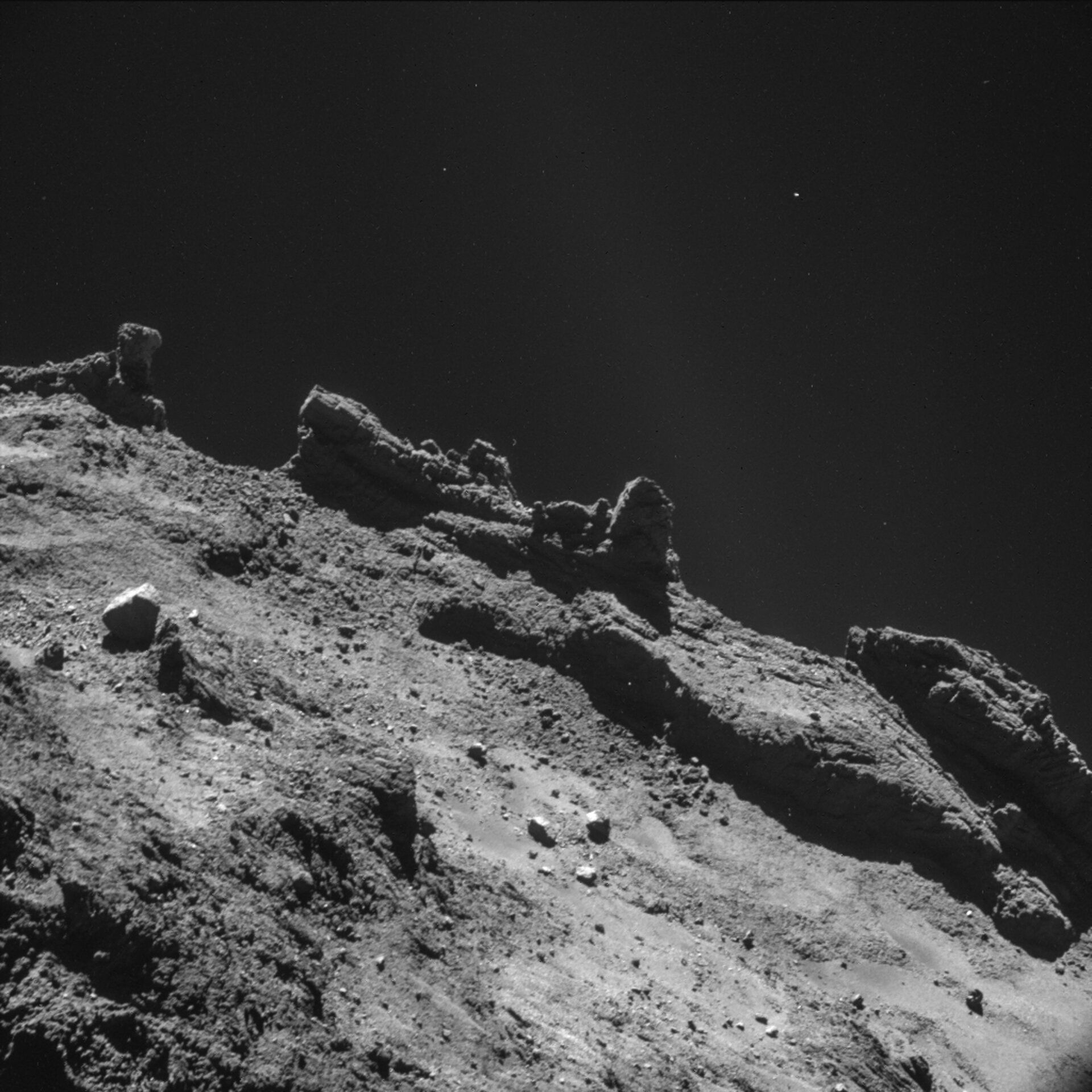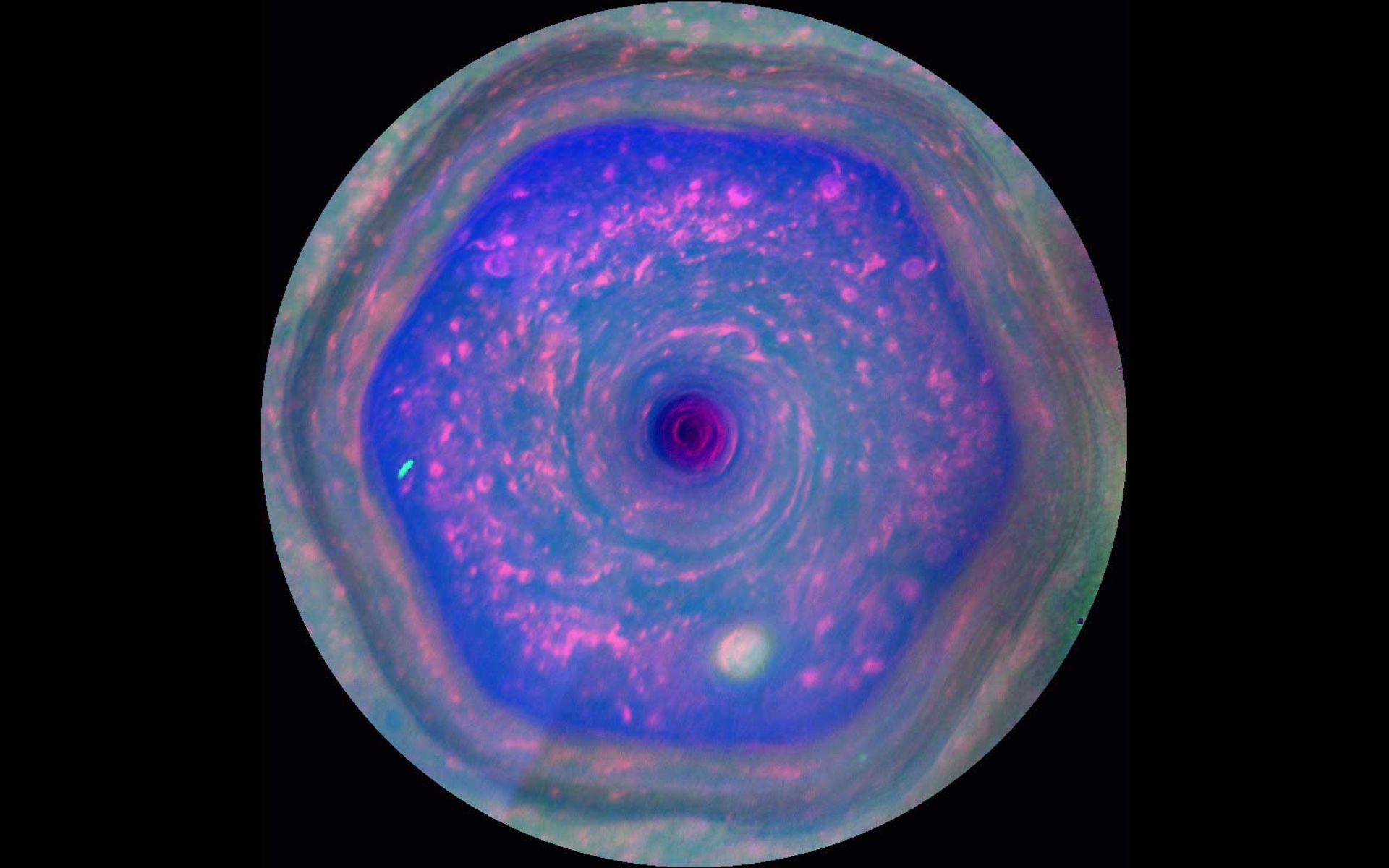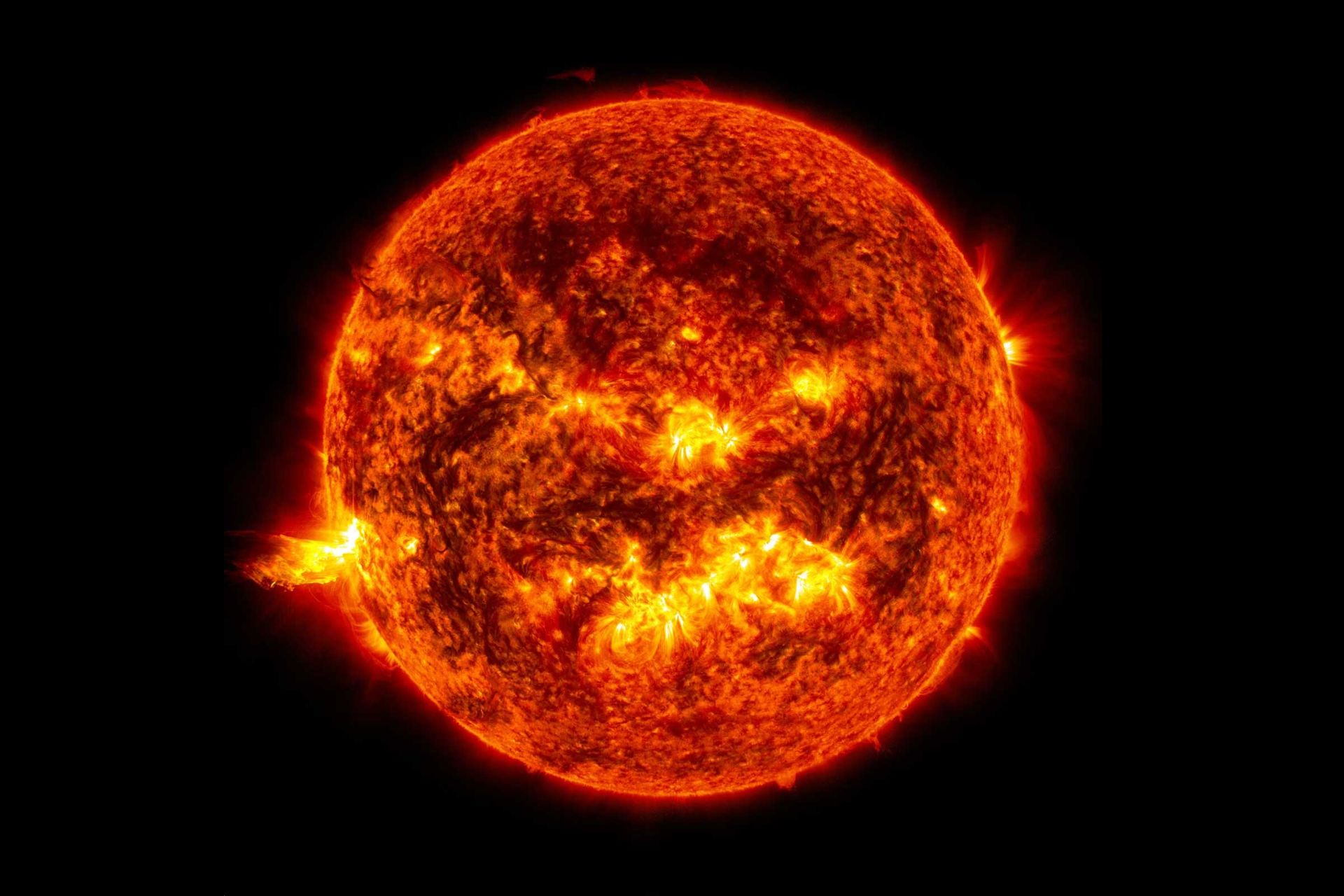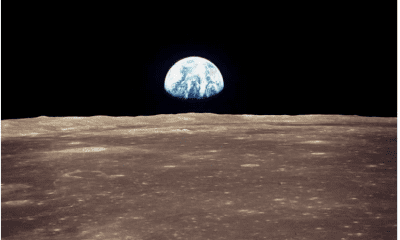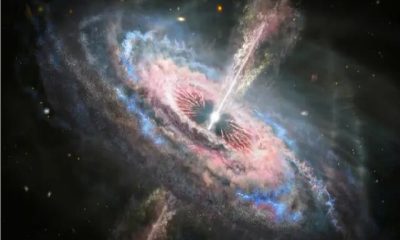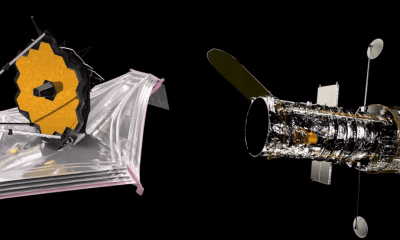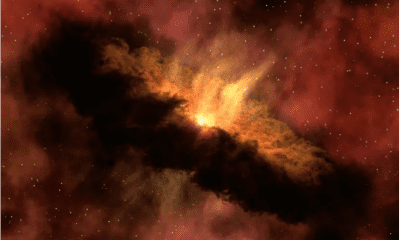Space
25 surprising facts about the solar system
Published
8 months agoon


From the vastness of the solar system and its strange moons to the ubiquitous presence of water and organic molecules, our solar neighborhood is full of surprising facts.
25 surprising facts about the solar system
Our solar system includes the sun and everything that revolves around it; Among the eight planets that we have all been familiar with since elementary school. But the main planets, despite their diversity and charm, are only part of the wonders of our cosmic neighborhood. Planet Earth’s neighbors in space include comets, asteroids, dwarf planets, mysterious moons, and a series of phenomena so strange and alien that they are not easily explained.
Table of Contents
- 1. The solar system is very, very large
- 2. Even our neighborhood is very big
- 3. Uranus orbits the Sun sideways
- 4. Jupiter’s moon Io is full of volcanic eruptions
- 5. Mars has a volcano that is bigger than the entire state of Hawaii
- 6. The biggest canyon on Mars could take Earth’s Grand Canyon in one bite
- 7. Venus is swept by super-powerful winds
- 8. Water is everywhere
- 9. Human spacecraft have visited all planets
- 10. Pollutants may be transported to habitable areas
- 11. Mercury is shrinking
- 12. Pluto has mountains
- 13. Pluto has a strange atmosphere
- 14. Rings are more common than you might think
- 15. Jupiter’s Great Red Spot is shrinking
- 16. Most comets are detected with solar telescopes
- 17. The ninth planet
- 18. Neptune is very hot
- 19. Earth’s Van Allen Belt is much stranger than expected
- 20. What happened to Miranda?
- 21. Saturn’s yin-yang moon
- 22. Titan has a liquid cycle, But there is no water involved
- 23. Organic molecules are everywhere
- 24. Saturn has a hexagonal storm
- 25. The atmosphere of the Sun is much hotter than the surface of the Sun
From fascinating glaciers on the dwarf planet Pluto and a deep valley the size of the United States on the Red Planet to the possibility of a giant, undiscovered world known as the ninth planet beyond Neptune, the space around Earth is full of wonders. Stay tuned to Zoomit for some of the weirdest facts about the solar system.
25 surprising facts about the solar system
1. The solar system is extremely large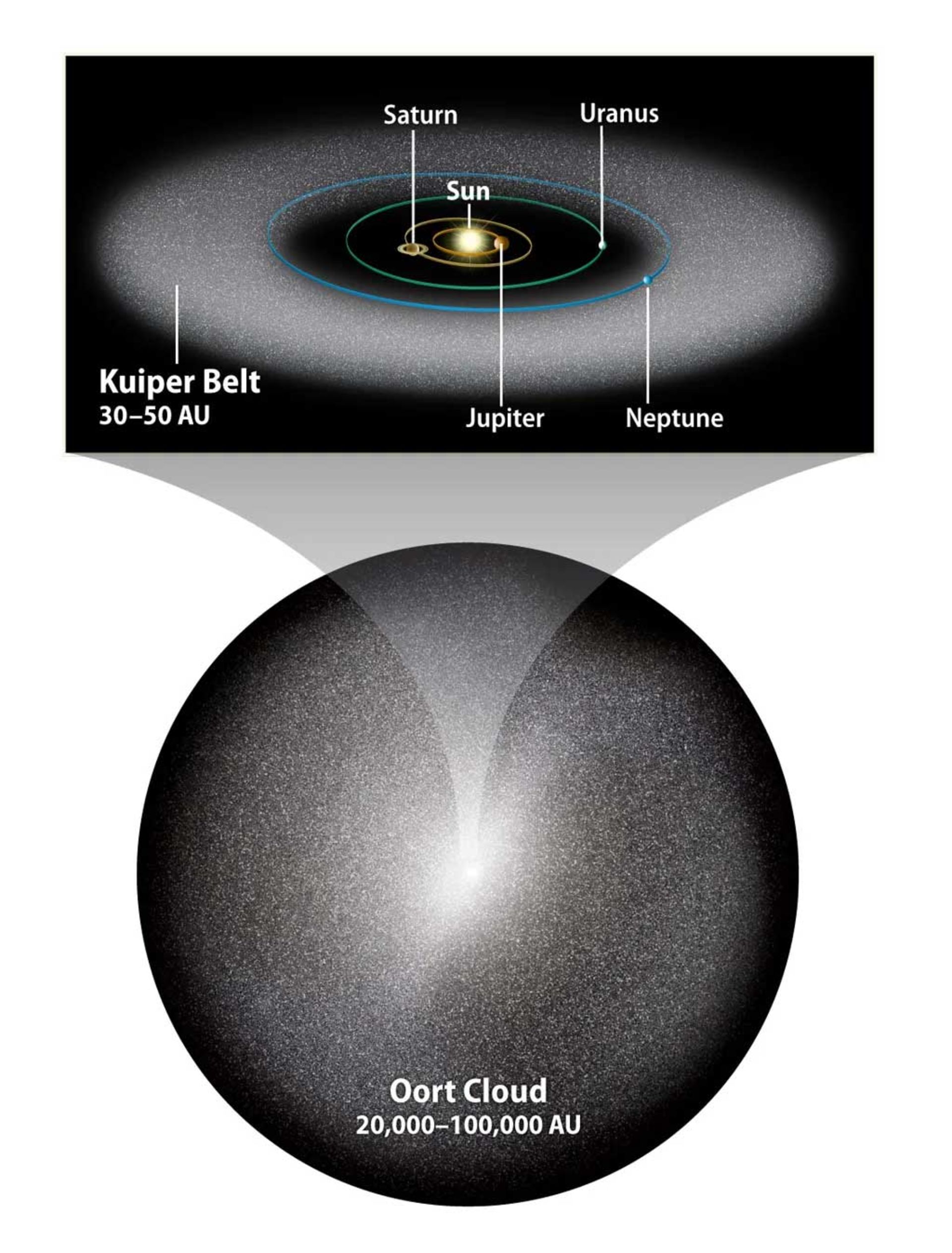
By including the Oort cloud, our star’s realm becomes much, much larger.
NASA’s Voyager 1 spacecraft began its mission in 1977, and more than three decades later in 2012, it became the first man-made object to enter interstellar space by passing through the heliopause or heliosphere boundary. The heliopause is the region where the magnetic fields and most of the particles emitted from the sun disappear.
However, according to NASA, “If we define our solar system as the Sun and primarily everything that orbits it, Voyager 1 will continue to remain within [dominance of] the Sun until, in the next 14,000 to 28,000 years, Get out of the Everett cloud.
2. Even our neighborhood is very big
Did you know that all the planets in the solar system can fit between the Earth and the Moon?
Depending on how accurately you do the math and how you arrange it, all the planets in the solar system can fit between the Earth and the Moon. The distance between the Earth and the Moon varies as does the diameter of each of them. Our planet and its moon are wider at their equator; As a result, Saturn or Jupiter or both must be slightly tilted to the sides to fit between them. However, if you lined up the planets from pole to pole, they would barely fit between us and our only space companion, blocking the sky with their rings and huge gas masses.
The moon is the farthest object humans have ever traveled to, and depending on how you think about it, it’s both amazingly far and incredibly close. Eight giant planets of the solar system can fit in the space between us and the moon, and yet, the distance from the Earth to the sun is more than 390 times the distance from the Earth to the moon.
Scientists use the approximate distance from the Earth to the Sun, known as an astronomical unit, or AU, to compare distances within the solar system. Jupiter is approximately 5.2 AU from the Sun and Neptune is 30.07 AU or approximately 30 times the distance from Earth to the Sun from our star.
3. Uranus orbits the sun sideways
This composite image of the two hemispheres of Uranus was obtained with the adaptive optics of the Keck telescope. The north pole of the planet is at 4 o’clock.
In solar system models, Uranus usually appears as a blue ball with no special features; But this gas giant, located in the outer limits of the solar system, is very strange from a global perspective. First of all, the seventh planet of the solar system has a very extreme axial deviation of 97.77 degrees; This means that it rotates sideways and completes its orbit around the sun like a rolling ball. The most likely explanation for the planet’s unusual orientation is a catastrophic collision with another body in the distant past.
The tilt of Uranus has caused NASA to witness the most unusual seasons in the solar system on this planet. In about a quarter of each Uranian year (equivalent to 21 Earth years), the Sun shines directly on the north or south pole of the planet; This situation means that half of Uranus does not see the Sun at all for more than two Earth decades.
Scientists have been monitoring these temperate seasons on Uranus and predicting that they will witness unusual weather on this planet at the moment of the 2007 equinox. But it was seven years later that unexpected violent storms occurred in the atmosphere of Uranus, and the planet became a bigger mystery than ever.
4. Jupitor’s moon Io is full of volcanic eruptions
Io has hundreds of active volcanoes. In this image, the moment of the spectacular eruption was captured by NASA’s Galileo spacecraft as it flew over the moon.
Jupiter’s moon Io may seem like a world of surprise compared to Earth’s silent moon. This Galilean moon, which is slightly smaller than the Earth’s moon, has hundreds of volcanoes and is considered the most active moon in the solar system. Io sends masses of sulfur smoke up to 300 km into its atmosphere. According to NASA, Io’s volcanoes emit a ton of gas and particles every second into space near Jupiter.
The eruptive nature of Io is due to the enormous forces that this moon is exposed to. Trapped in Jupiter’s gravitational well and magnetic field, Io experiences constant tension and relaxation as it moves away from the planet and approaches it, gaining enough energy for volcanic activity.
Scientists are still trying to figure out how heat is distributed inside Io. However, it is difficult to predict the location of volcanoes using only scientific models.
5. Mars has a volcano that is bigger than the entire state of Hawaii
Mount Olympus is the largest volcano discovered in the solar system.
Although Mars seems peaceful now, giant volcanoes once ruled the planet’s surface. One of these volcanoes is Mount Olympus, the largest volcano discovered in the solar system. With a width of 602 km, Olympus can be compared to the state of Arizona in America. The height of this volcano is 25 km or three times higher than Everest, the highest mountain on earth. According to NASA, Olympus is 100 times larger in volume than Mauna Loa, the largest volcano on Earth in Hawaii.
Scientists suspect that volcanoes can grow to such enormous sizes on Mars because of Mars’ weak gravity compared to Earth’s. Moreover, while the earth’s crust is constantly moving, the crust of Mars is probably stationary based on the belief of some researchers. If the surface of Mars does not move, a volcano can form in one spot for a longer period of time.
25 surprising facts about the solar system
6. The biggest canyon on Mars could take Earth’s Grand Canyon in one bite
Mariner Canyon on Mars is more than 10 times longer than the Grand Canyon on Earth.
The huge system of Martian canyons, known as the Mariner Canyon, is 4,000 kilometers long, more than 10 times larger than the Grand Canyon on Earth. Mariner Canyon was overlooked by early Martian spacecraft that flew over other parts of the planet and was finally discovered by the Mariner 9 probe in 1971. If the Mariner Valley was located on Earth, it could stretch from the East Coast to the West Coast of America.
The lack of active plate tectonics on Mars makes it difficult to discern how Mariner Valley formed. Some scientists think that a chain of volcanoes on the other side of the planet, known as the Tharsis Plateau, which includes Mount Olympus, somehow bent the crust away from Mars. That destructive force created fissures in the crust, exposed vast amounts of groundwater to excavate the rocks, and formed glaciers that opened new routes into the canyon system.
7. Venus is swept by super-powerful winds
This artistic image shows the rocky surface of Venus and sulfuric acid clouds.
Venus is a hellish planet with a high temperature and pressure environment on its surface. The second planet in the solar system is extremely dry and hot enough to melt lead and has probably never had an environment conducive to supporting life. When the heavily protected Venus spacecraft from the Soviet Union landed on Venus in the 1970s, each lasted only a few minutes, or hours at most, before melting or shattering.
However, Earth’s infernal twin has a far stranger environment beyond its surface. Scientists have found that the winds in the upper atmosphere of Venus blow 50 times faster than the rotation of the planet. The European Venus Express spacecraft, which orbited Venus between 2006 and 2014, tracked the winds over long periods and detected periodic changes. The probe also showed that powerful winds appear to be getting stronger with time.
A study in 2020 pointed to the presence of phosphine, which is a possible sign of the decay of biological materials, in the clouds of Venus. This study initially excited some astrobiologists, But the supplementary research firmly rejected the possibility of the existence of life in the dry and windy atmosphere of Venus.
8. Water is everywhere
This artistic rendering shows what Mars would look like with water lakes.
At one time, water was considered as a rare substance in space; But the truth is that water ice exists throughout the solar system and is a common constituent of comets and asteroids.
Water can be found as ice in the permanently shadowed craters of Mercury and the Moon. However, we don’t know if there is enough water to support possible human settlements in those places. Also, Mars has ice on its poles. Even smaller solar system objects, such as Enceladus, Saturn’s moon, and the dwarf planet Ceres, have ice.
NASA scientists believe that Jupiter’s moon Europa is the most likely candidate known to support extraterrestrial life; Because contrary to all expectations, liquid water is probably flowing under its cracked and frozen surface. Europa, which is much smaller than Earth, probably has a deep ocean that researchers believe contains twice as much water as all the oceans on Earth combined.
However, we know that not all ice is the same. For example, a close examination of comet 67P/Churyumov-Grasimenko by the European Space Agency’s Rosetta spacecraft revealed a different type of water ice than that found on Earth.
9. Human spacecraft have visited all planets
The outer planets of the solar system as seen by the Voyager 2 spacecraft.
We’ve been exploring space for over 60 years and have been lucky enough to get close-up images of dozens of celestial bodies. Most importantly, we have sent spacecraft to all the planets in the solar system, including Mercury, Venus, Mars, Jupiter, Saturn, Uranus, and Neptune, as well as the two dwarf planets, Pluto and Ceres.
Most of the close flybys of the planets were made by NASA’s Voyager twins, which left Earth more than four decades ago and are still transmitting data from interstellar space to this day. Voyagers met all of them during their long journey, thanks to a rare alignment of the outer planets.
10. Pollutants may be transported to habitable areas
Hydrothermal vents in the ocean.
Scientists have not yet found evidence of life in other parts of the solar system; But as they learn more about the hardy microbes that inhabit Earth’s harsh environments, such as ocean-floor hydrothermal vents or frozen environments, they have more opportunities to find alien life on other planets.
Currently, the presence of microbial life on Mars is considered so probable that scientists take special precautions to clean spacecraft bound for this planet. NASA decided to crash the Galileo spacecraft into Jupiter to avoid the risk of contaminating Europa’s potentially habitable oceans.
Read More: Will Earth one day become a wandering planet?
25 surprising facts about the solar system
11. Mercury is shrinking
Mercury, the smallest planet in our solar system, has short years, long days, and extreme temperatures.
With the exception of the dwarf planet Pluto, Mercury is currently the smallest planet in the solar system and the most dense planet after Earth. However, the innermost planet in our solar neighborhood is shrinking and becoming denser.
For many years, scientists believed that Earth was the only tectonically active planet in the solar system. But after NASA’s MESSENGER spacecraft, performing its first orbital mission on Mercury, mapped the entire planet in high resolution and took a look at its surface features, this belief changed.
In 2016, MESSENGER data revealed chasm-like features known as fault chasms. Because these fault chasms are relatively small, scientists are confident that they did not form long ago and that Mercury is still contracting, 4.5 billion years after the formation of the solar system.
12. Pluto has mountains
In July 2015, NASA’s New Horizons spacecraft sent back impressive images of Pluto and its moons.
Pluto is a small world at the edge of the solar system; As a result, scientists thought that this dwarf planet would have a completely uniform environment full of craters. But this belief changed in 2015. That year, NASA’s New Horizons spacecraft flew past Pluto and sent back unprecedented images, forever changing the way we look at this distant object.
Among the amazing discoveries of New Horizons, there were icebergs with a height of 3,300 meters; A finding that suggests Pluto must have been geologically active at least 100 million years ago. But geological activity requires energy, and the source of this energy inside Pluto is a mystery. The Sun is too far away to generate enough heat for geological activity, and there are no large planets close enough to Pluto to cause such a gravitational disturbance.
13. Pluto has a strange atmosphere
NASA’s New Horizons spacecraft took this image of Pluto from a distance of 200,000 km. Pluto’s atmosphere can be seen as a blue haze.
Pluto’s observed atmosphere disproved all predictions. The scientists observed that the dwarf planet’s unexpectedly hazy atmosphere extends up to 1,600 km and extends beyond the Earth’s atmosphere, away from the surface. When data from NASA’s New Horizons mission came in, scientists began analyzing the nebula and discovered some surprises there as well.
Scientists have found nearly 20 layers in Pluto’s atmosphere that are both colder and denser than expected. This feature affects calculations related to the rate of loss of Pluto’s nitrogen-rich atmosphere in space. The New Horizons team found that thousands of kilograms of nitrogen gas escape from the dwarf planet every hour; But Pluto somehow manages to continuously replenish the lost nitrogen. The recovery of this gas is probably done mostly through geological activities.
14. Rings are more common than you might think
Saturn is not the only ringed object in the solar system.
Since the invention of telescopes in the 17th century, we have known about the existence of rings around Saturn; But to reveal more rings, we needed the powerful spacecraft and telescopes built in the last 50 years. We now know that all the outer planets of the solar system, including Jupiter, Saturn, Uranus, and Neptune, have ring systems.
However, the rings vary from planet to planet: Saturn’s spectacular ring, which is partly made of glowing, reflective water ice, is unmatched anywhere else. In contrast, the rings of other giants are probably made of rocky particles and dust.
Rings are also not limited to planets. For example, in 2014 astronomers discovered rings around the asteroid Chariklo.
15. Jupiter’s Great Red Spot is shrinking
Jupiter’s Great Red Spot is the largest storm in the solar system.
Besides being the largest planet in the solar system, Jupiter also hosts the largest storm in the solar neighborhood. This red storm, known as the Great Red Spot, has been observed in telescopes since the 17th century and studied with modern instruments such as NASA’s Juno probe. The spacecraft has recently provided evidence that Jupiter’s giant storm is hundreds of kilometers high and is likely fed by winds thousands of kilometers below. This storm has been a complex mystery for centuries; But in recent decades, another secret has been revealed: the Great Red Spot is shrinking.
In 2014, Jupiter’s Great Storm was only 16,500 km wide, roughly half its historical size. This diminution is monitored by professional telescopes as well as amateur astronomers. Amateurs can often take more consistent measurements of the client; Because the observation time in larger and professional telescopes is limited and is often divided between different objects.
25 surprising facts about the solar system
16. Most comets are detected with solar telescopes
Comet Ison appears from the lower right of the image and moves to the upper right. This impressive image was captured by the Horspeary Solar Observatory, and the image of the Sun in the center was obtained from NASA’s Solar Dynamics Observatory.
Comets used to be the domain of amateur astronomers who probed the sky night after night with their telescopes. Although some professional observatories also made discoveries while observing comets, the status of explorations in this field started to change with the launch of the Solar and Horseshoe Observatory (SOHO) in 1995.
Since then, SOHO has found more than 2,400 comets. This volume of comet discovery has been a very fruitful side mission for a probe that only observes the Sun. The nickname of these comets is “Sunriser” or “Solstice”. Many amateur astronomers continue to help find these objects by identifying comets in raw SOHO images. One of SOHO’s most famous observations was when it observed the collapse of the bright comet Ison in 2013.
17. The ninth planet
A ninth planet is a hypothetical world that could explain the motion of some Kuiper belt objects.
In January 2015, California Institute of Technology (Caltech) astronomers Konstantin Batygin and Mike Brown, relying on calculations and mathematical simulations, announced that a giant planet might be hidden far beyond Neptune. Now several teams are searching for this hypothetical “ninth planet” and research shows that it is possible to discover it within the next decade.
A ninth planet, if present, could help explain the motions of some objects in the Kuiper Belt (an icy collection of objects beyond Neptune’s orbit). Brown has already discovered several large bodies in that region, in some cases rivaling Pluto in size. In fact, his discoveries were the catalyst for Pluto’s status change from a planet to a dwarf planet in 2006.
But some scientists follow another theory; That “Planet Nine” might actually be a black hole the size of Grapefruit that bends space just like a giant planet. However, another team suggests that the strange movements of the Kuiper belt’s distant inhabitants are likely the collective effect of several small objects; No undiscovered planets or black holes.
18. Neptune is very hot
The distance of Neptune from the Sun is approximately 30 AU.
Neptune, the outermost planet in the Solar System, is 30 times farther from the Sun than Earth and receives less light and heat. However, Neptune emits much more heat than it receives and has a much more active atmosphere than its neighbor Uranus. Uranus is closer to the Sun, yet emits nearly as much heat as Neptune. Scientists still do not know the cause of this problem.
The wind on Neptune can blow up to 2400 km/h. Does this amount of energy come from the sun, the planet’s core, or gravitational contraction? Researchers are trying to find the answer to this mystery.
19. Earth’s Van Allen Belt is much stranger than expected
Discovered in 1958, the Van Allen belts are large bands of radiation that surround the Earth and expand and contract based on the activity of the Sun.
The Earth has several magnetically trapped bands of highly energetic charged particles around it, called the Van Allen Belts in honor of their discoverer. Although we’ve known about these belts since the dawn of the space age, the Van Allen probes, launched in 2012, provided the best possible picture of them and revealed many surprises along the way.
We now know that the belts expand and contract based on the activity of the sun. Sometimes the belts are very distinct from each other, and at other times, they swell as one large unit. An additional radiation belt, beyond the two known, was discovered in 2013. Understanding these belts helps scientists make better predictions about space weather or solar storms.
20. What happened to Miranda?
Uranus’ moon Miranda has one of the most diverse landscapes of any extraterrestrial object.
One of the strangest outer moons of the solar system is Miranda. This mysterious moon of Uranus was observed only once in 1986; Voyager 2 caught a glimpse of it during its tour of the solar system. Miranda hosts sharp ridges, craters, and other large discontinuities on its surface that are usually the result of volcanic activity. Tectonic activity can cause the formation of such a surface, But Miranda is too small to generate that kind of heat on her own.
Researchers believe that the gravitational pull of Uranus could have caused the necessary pressure to heat, overturn, and deform Miranda’s surface. But to be sure, we need to send another spacecraft to investigate the unseen northern hemisphere of the moon.
25 surprising facts about the solar system
21. Saturn’s yin-yang moon
Saturn’s moon Iapetus shows drastic differences in surface brightness depending on which side it faces the Sun.
Saturn’s moon Iaptus has a very dark hemisphere that always faces the planet and a very bright hemisphere that always faces Saturn. The brightness of most asteroids, moons, and planets is relatively uniform across their surfaces; But Iaptus sometimes shines so brightly that it was observed by the Giovanni Cassini telescope in the 17th century, and then dims considerably as it spins the other way.
Current research shows that Iaptus, also known as Saturn 8, is made mostly of water ice. According to scientists’ hypothesis, when the dark side of the moon faces the sun, water ice sublimates from that area and leaves behind darker rocks. Since dark matter heats up more than bright, reflective ice, this process may have created a positive feedback loop; In this way, when the darker and warmer part of the moon loses its ice, it heats up more easily when facing the sun and accelerates the loss of ice.
22. Titan has a liquid cycle, But there is definitely no water involved
Titan’s lakes are full of methane and ethane and possibly a layer of water.
Another strange moon of the solar system is Titan, a moon of Saturn. Titan hosts a “fluid cycle” that moves material between the atmosphere and the surface. This circulation of materials is apparently very similar to the water cycle on Earth; But Titan’s huge lakes are filled with methane and ethane, probably on top of a layer of water.
Using data from the international Cassini mission, researchers hope to uncover some of the moon’s secrets before designing a submarine that could one day explore Titan’s mysterious depths.
23. Organic molecules are everywhere
Organic molecules have been found in many places in the solar system, including comet 67P/Churyomov-Grasimenko. In this image, the rugged landscape of the comet’s core was captured by the Rosetta spacecraft.
Organics are complex carbon-based molecules found in living organisms, But abiotic processes can also be their creators. Although common on Earth, organic molecules can be found unexpectedly in many other places in the solar system. For example, scientists have discovered organic matter on the surface of comet 67pi. The hypothesis that organic molecules were probably brought to the surface of our planet from space to start life on Earth was strengthened by the discovery of these molecules in comet P67.
Organic matter has also been found on the surface of Mercury, Titan, Saturn’s moon (which gives it its orange color), and Mars.
24. Saturn has a hexagonal storm
Saturn’s northern hemisphere is home to a strange hexagonal storm that has been raging for decades.
Saturn’s northern hemisphere has an intense six-sided storm known as the “hexagon”. This hexagon, a towering multi-layered storm, has existed for decades, perhaps even hundreds of years.
Saturn’s strange storm was discovered in the 1980s; But until the Cassini spacecraft flew between 2004 and 2017, it was difficult to observe it. Cassini images and data showed that the hexagonal storm is 300 km high and 32 thousand km wide and consists of air moving at a speed of 320 km/h.
25. The atmosphere of the Sun is much hotter than the surface of the Sun
The temperature of the sun is different in each layer of its atmosphere.
While the temperature of the visible surface of the sun or photosphere is 5500 degrees Celsius, the temperature of the upper atmosphere or corona (solar corona) reaches millions of degrees. This extreme temperature difference is one of the great mysteries of the star of our system.
However, NASA has several solar-observing spacecraft in its fleet of probes, and they have some hypotheses for how heat is generated in the sun. One such idea is the “heat bombs” that occur when magnetic fields align in the corona. Another hypothesis is related to the time when plasma waves move from the surface of the Sun to the corona.
With new data from the Parker probe, which has become the closest man-made object to the Sun,we are closer than ever to unlocking the secrets of the heart of the Solar System.


You may like


Why is it still difficult to land on the moon?
This year, the private company Spacel and the Indian Space Organization both met tragic ends when they tried to land their spacecraft on the surface of the moon. Despite the astonishing leaps made in recent decades in computing, artificial intelligence and other technologies, it seems that landing on the moon should be easier now; But recent setbacks show that we still have a long way to go with safe and trouble-free landings on the surface of Earth’s only moon.
50 years after sending the first man to the surface of the moon, the question arises as to why safely landing a spacecraft on Earth’s nearest cosmic neighbor is still a difficult task for space agencies and private space companies. Stay with Zoomit to check the answer to this question.
Why is the lunar landing associated with 15 minutes of fear?
Despite the complexities of any space mission, sending an object from Earth into orbit around the moon today is easy. Christopher Riley, the director of the documentary film In the Shadow of the Moon produced in 2007 and the author of the book Where We Stood (2019), both of which are about the history of the Apollo 11 mission, explained the reasons for the difficulty of landing on the moon in an interview with Digital Trends. is According to him: “Today, the paths between the Earth and the Moon are well known, and it is easy to predict them and fly inside them.”
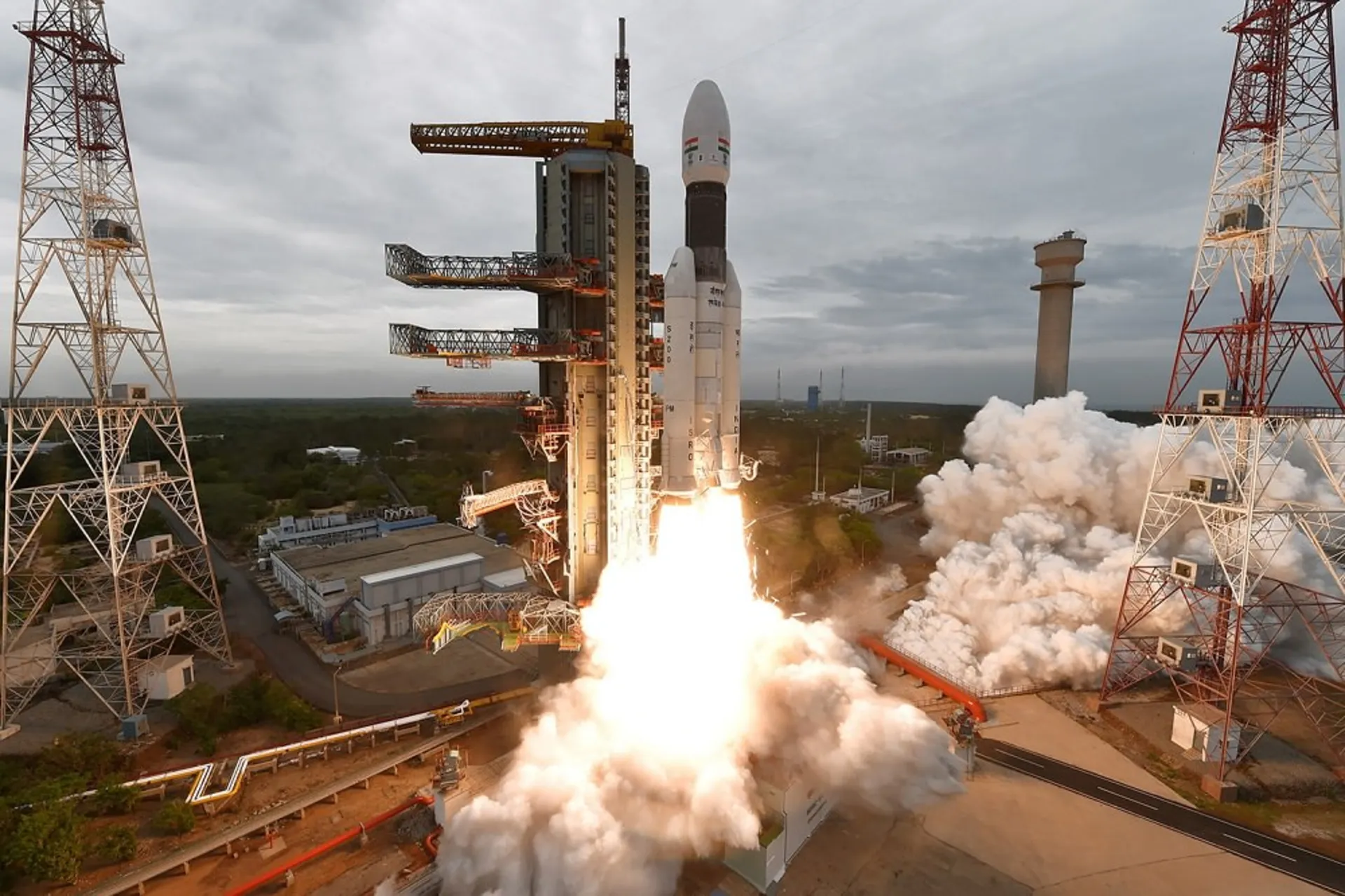
Chandrayaan 2 mission launch
However, the real challenge is getting the spacecraft out of orbit and landing it on the lunar surface; Because there is a delay in the communication between the Earth and the Moon, and the people in the control room who are present on the Earth cannot manually control the spacecraft in order to land it safely on the Moon. As a result, the spacecraft must descend automatically, and to do so, it will fire its descent engines to slow its speed from thousands of kilometers per hour to about one meter per second, in order to make a safe landing on the lunar surface.
For this reason, the director of the Indian Space Research Organization (ISRO), who was trying to land the Vikram lander last month, described the final descent of the spacecraft as “frightening 15 minutes”; Because as soon as the spacecraft enters the landing stage, the control of its status is out of the hands of the mission control members. They can only watch the spacecraft land and hope that everything goes according to plan, that hundreds of commands are executed correctly, and that the automatic landing systems gently bring the spacecraft closer to the surface of the moon.
The Great Unknown: The Landing Surface
One of the biggest challenges in the final descent phase is identifying the type of landing site. Despite the availability of instruments such as the Lunar Reconnaissance Orbiter (LRO) that can capture amazing views of the lunar surface, it is still difficult to know what kind of surface the spacecraft will encounter when it lands on the moon.
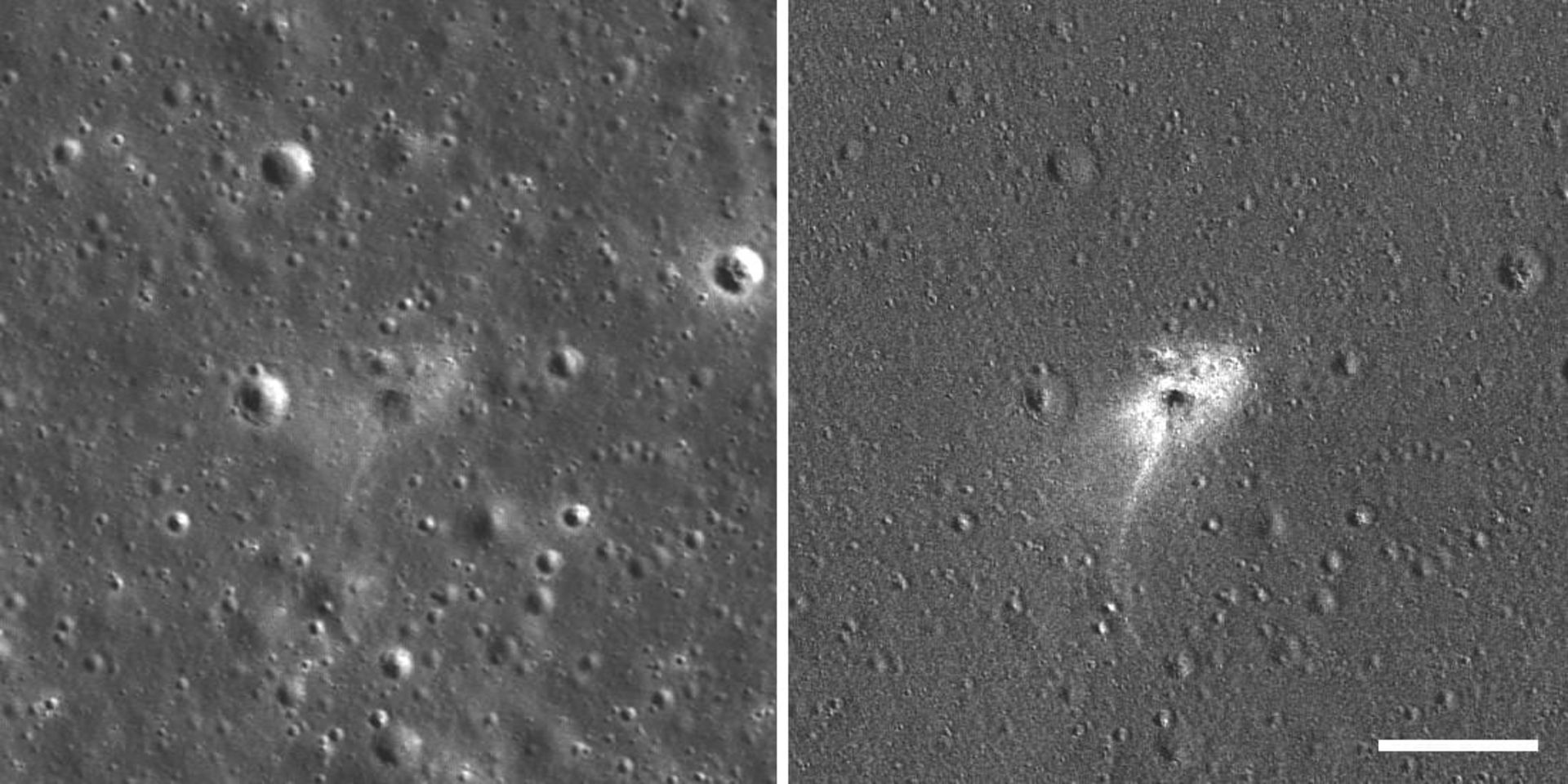
Left: Breshit crash site. Right: The ratio of the before and after images highlights the occurrence of minor changes in surface brightness.
Leonard David, author of Moon Fever: The New Space Race (2019) and veteran space reporter, says:
The Lunar Reconnaissance Orbiter is a very valuable asset that has performed really well over the years; But when you get a few meters above the surface of the moon, complications appear that cannot be seen even with the very powerful LRO camera.
Even today, despite the imaging data available, “some landing sites still have unknown remains,” Riley says. He notes that the Apollo 11 mission included an advantage that today’s unmanned landers lack, which is the presence of an astronaut’s observer’s eyes that can closely observe the surface of the spacecraft’s landing site. As you probably know, in the mission that led to the landing of the first man on the surface of the moon, the Eagle computer was guiding the spacecraft to a place full of boulders; But to avoid hitting the rocky surface of the moon, Armstrong took control of the spacecraft himself and landed it on a flat surface.
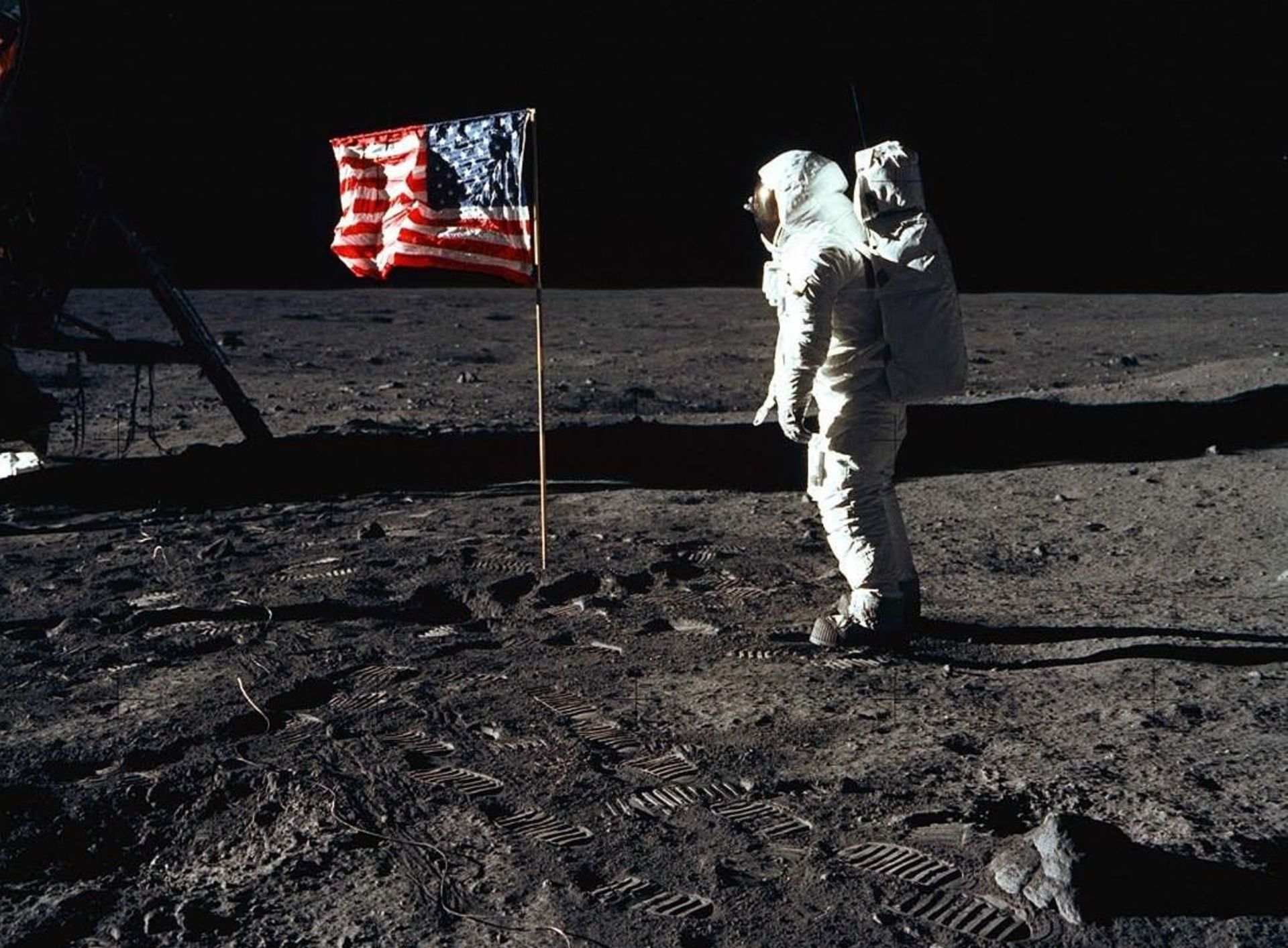
The uneven surface of the landing site had caused many problems in previous lunar missions such as Apollo 15. In this mission, the astronauts were told that as soon as the spacecraft touched the surface of the moon, they should turn off the engines to prevent dust from being sucked in and the risk of a return explosion. But the Apollo 15 spacecraft landed in a crater, and because of this, one of its legs came into contact with the surface earlier than the others. When the crew shut down the engines, the spacecraft, moving at a speed of 1.2 meters per second, experienced a hard landing. The lander landed at an oblique angle, and although it eventually landed safely, it nearly overturned, causing a fatal disaster.
- Half a century after Apollo 11; How did the great human leap happen?
- dust storms; The nightmare of space missions to the moon
The difficult landing of Apollo 15 introduced another complicating factor in lunar landings: lunar dust. The Earth’s moon is covered with dust that is thrown into the air by any movement and sticks to everything it comes in contact with. As the spacecraft approaches the surface of the moon, huge plumes of dust are kicked up that limit the field of view and endanger the spacecraft’s electronics and other systems. We still do not have a solution to deal with the dust problem.
An achievement that has been achieved before
Another reason why the moon landing remains a challenge is that gaining public support for lunar projects seems difficult. Referring to Neil Armstrong and Buzz Aldrin, the two astronauts who walked on the moon during the Apollo 11 mission, David says, “We convinced ourselves that we had sent Neil and Buzz [to the surface of the moon]; “As a result, when it comes to lunar missions, people may say we’ve been there before and we’ve had this success.”
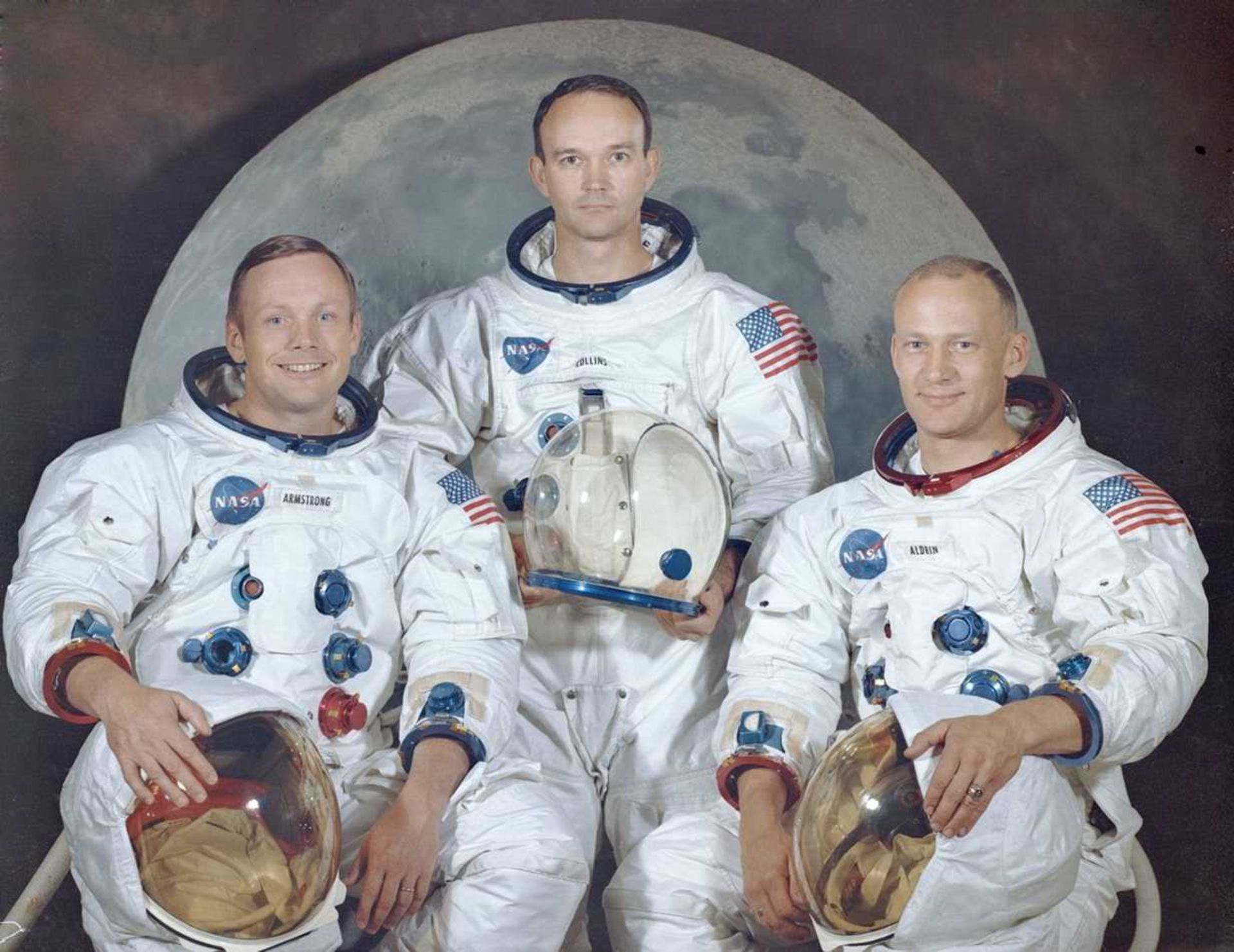
But in reality, our understanding of the moon is still very little, especially in relation to long-term missions. Now, with a 50-year gap between the Apollo missions and NASA’s upcoming Artemis project, the knowledge gained has been lost as engineers and specialists retire. David says:
We need to recover our ability to travel into deep space. We haven’t gone beyond near-Earth orbit since Apollo 17 and since 1972. NASA is no longer the same organization that put men on the moon, and there is a whole new generation of mission operators.
The importance of redundancy
As the first private spacecraft entered into orbit around the moon, the Space project was of considerable importance; But its failure to land smoothly on the surface of the moon made the achievement of landing on the surface of the moon still remain in the hands of governments. However, we can expect more private companies, such as Jeff Bezos ‘ Blue Origin, which is developing its lunar lander, to target the moon in the future. According to Elon Musk, even the giant SpaceX Starship spacecraft, which is being built with the ultimate goal of sending a human mission to Mars , can also land on the moon.
According to David, private companies’ participation in lunar landings has advantages such as increased innovation. However, companies are under pressure to save money, and this can lead to a lack of redundancy and support systems that are essential in the event of errors and malfunctions. Lunar rovers typically include two or even three layers of support systems. David is concerned that private companies will be encouraged to eliminate these redundancies in order to cut costs and save money.

Crew Dragon SpaceX passenger capsule
“We saw Elon Musk’s Dragon capsule catch fire after a failed test on the stand,” says David, referring to the explosion of the SpaceX spacecraft in April, which had no crew on board. “This accident was kind of a wake-up call about how unpredictable the performance of spacecraft can be.” David compared the Crew Dragon incident to the Apollo 1 disaster, which killed three NASA astronauts during a test launch in 1967.
Another problem related to the lack of redundancy systems is the lack of information needed when an error occurs. As for the recent landings, it seems that the SpaceX crash was caused by human error; however, it is not clear what caused the failure of Chandrayaan 2 in the calm landing, and it is possible that without the necessary systems to record and send information to the lander, we will never find out the main reason for the failure of this mission. Without the required data, it becomes much more difficult to prevent problems from reoccurring in the future.
The future of lunar landings
Currently, many projects are underway to facilitate future moon landings. Ultimately, we need to be able to build the necessary infrastructure for a long-term stay on the moon.
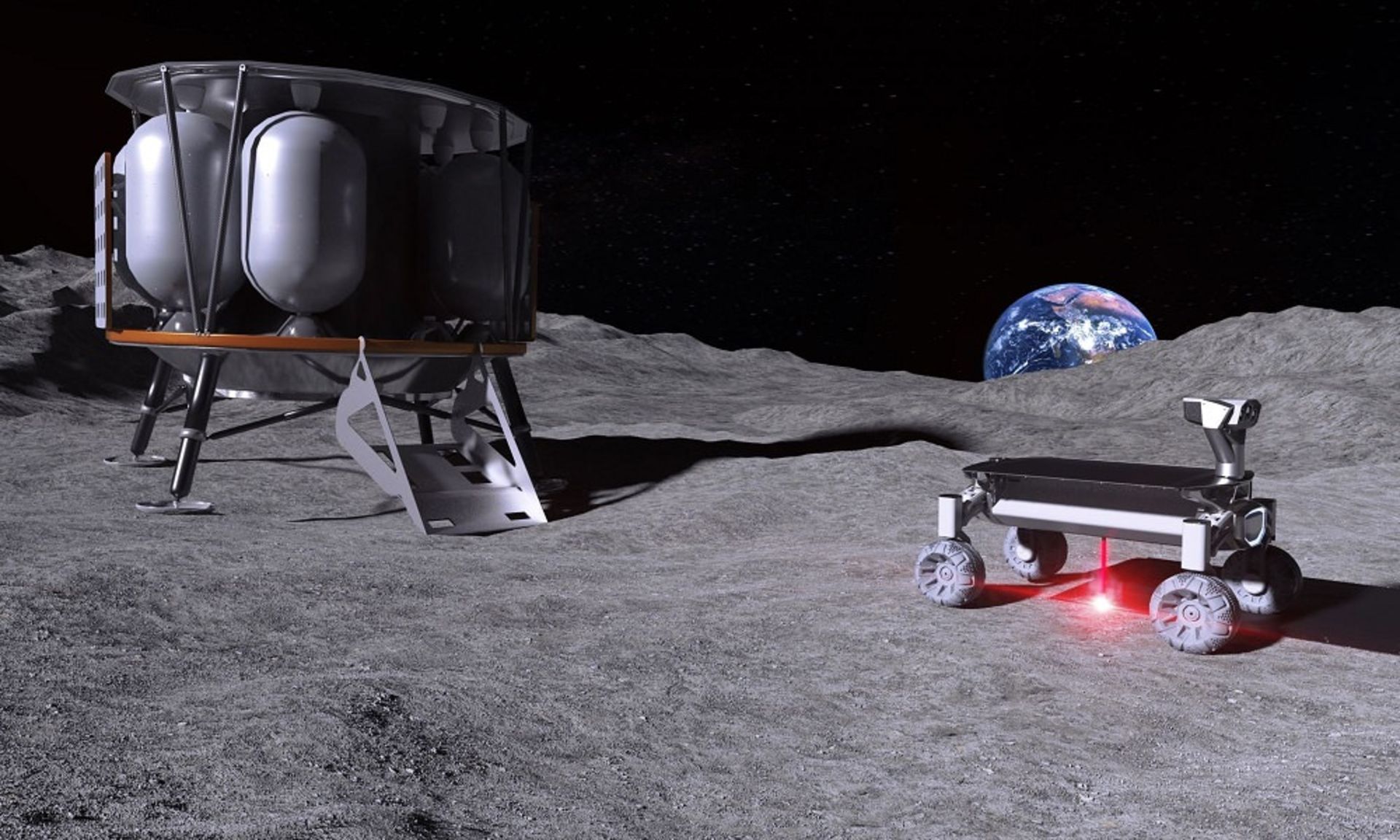
Conceptual design of Moonrise technology on the moon. On the left side is the Alina lunar module, and on the right side, the lunar rover equipped with Moonrise technology melts the lunar soil with the help of a laser.
If we can make long-term stays on the moon possible, or even build a permanent base there, landing spacecraft on the lunar surface will be much easier. By constructing the landing sites, a flat, safe, and free surface of unknown debris can be created for the landing of surface occupants. For example, researchers are currently conducting research at NASA’s Kennedy Space Center to investigate the feasibility of using microwaves to melt the lunar soil (regolith) and turn it into a hard foundation so that it can be used as a landing and launch site. The European Space Agency is also investigating how to use 3D printing to create landing sites and other infrastructure on the moon.
Read more: Europa Clipper, NASA’s flagship probe was launched
Other ideas include the use of lidar remote sensing systems, which are similar to radar systems; But instead of radio waves, it uses lasers to land the spacecraft. Lidar technology provides more accurate readings and uses a network of GPS satellites to help guide the spacecraft during landing.
The problem of public support
As important as technology is, public interest and support are essential to the success of the lunar landing program. “Apollo had enormous resources that are perhaps only comparable today to China’s space program,” says Riley. “Remember that Apollo carried the best computer imaginable, the human brain.” It goes without saying that there is an element of luck involved in every landing.
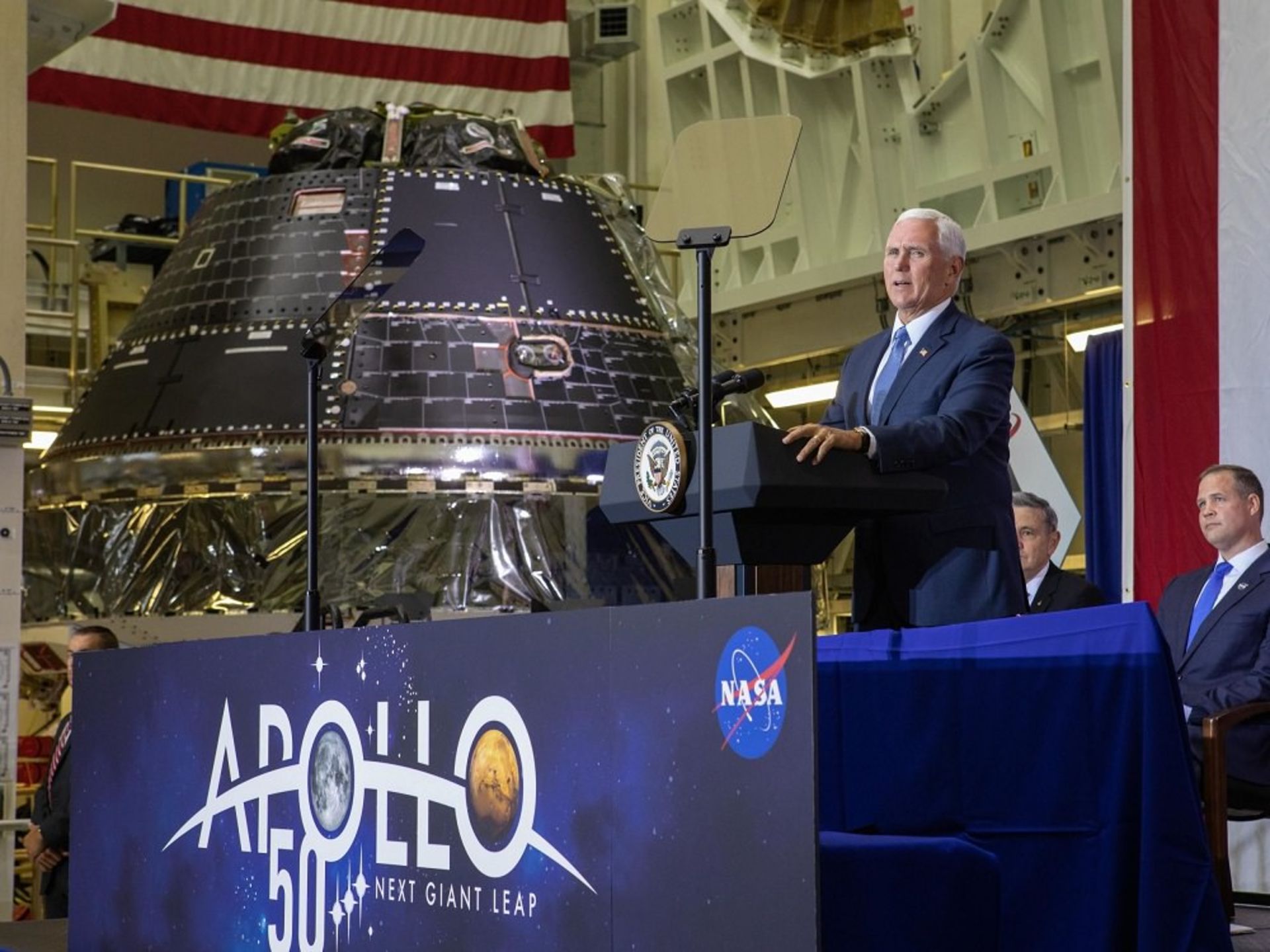
US Vice President Mike Pence speaking at the 50th anniversary of the Apollo 11 mission
Finally, there is the question of what kind of failure is acceptable for people. David says:
I think we have to be serious about the fact that we’re probably going to lose people. There is a serious possibility that the manned lunar lander will crash and kill the astronauts inside. The American people continued to support NASA despite the failures and bad luck of the Apollo program, But at that time there was a lot of pressure to compete with the Soviet Union. Without the bipolar atmosphere of the Cold War and the space race, would people still support missions with human lives in between?


Europa Clipper, NASA’s flagship probe was launched
After years of waiting, NASA’s Europa Clipper probe was finally launched on Monday at 7:36 p.m. Iran time from the Kennedy Space Center on top of SpaceX’s Falcon Heavy rocket and began a major astrobiology mission to Europa, the potentially habitable moon of Jupiter.
As SpaceX’s massive rocket powered by 27 powerful Merlin engines lifted off from pad 39A, NASA live broadcast reporter Dron Neal said, “The launch of Falcon Heavy with Europa Clipper will reveal the secrets of the vast ocean beneath the icy crust of Europa, Jupiter’s moon. It has been hidden, it will reveal.”
The engines of the two side boosters of the Falcon Heavy were shut down and separated from the central booster approximately three minutes after the flight. The central booster continued to fly for another minute, and then in the fourth minute of the launch, the separation of the upper stage from the first stage was confirmed. Finally, 58 minutes later, Europa Clipper was injected into interplanetary orbit as scheduled. A few minutes later, the mission team made contact with the probe, and people in the control room cheered and applauded.
Falcon Heavy’s unique launch
The launch of NASA’s new probe was delayed due to some mishaps. NASA and SpaceX initially planned to launch the Europa Clipper mission on Thursday, October 10; But with powerful Hurricane Milton hitting Florida’s Gulf Coast on Wednesday evening, a delay in the launch became inevitable. NASA shut down Kennedy Space Center to deal with the storm, and Europa Clipper was placed inside SpaceX’s hangar near Launch Pad 39A.
The recent launch was Falcon Heavy’s 11th flight overall and its second interplanetary mission. Also, this was the first flight of the Falcon Heavy, when all three boosters of the first stage of the rocket were deployed.
Typically, the Falcon Heavy and Falcon 9 first-stage boosters store enough fuel to perform landing maneuvers for recovery and reuse in the future; But Europa Clipper needed all the power that Falcon Heavy could provide in order to make it on its way to the Jupiter system.
A long way to the launch pad
In late 2015, the US Congress directed NASA to launch Europa Clipper using the Space Launch System (SLS), NASA’s massive rocket. SLS was still under construction at the time and was several years away from reaching the launch pad. The delay in completing the construction of this powerful rocket and NASA’s need to assign at least the first three versions of SLS to the Artemis lunar mission caused the Europa Clipper launch date to be in an aura of uncertainty.
In the 2021 House budget draft for NASA, the agency was directed to launch Europa Clipper by 2025 and, if possible, with SLS. However, due to the unavailability of the Space Launch System, NASA had to go to SpaceX’s Falcon Heavy. This decision was not without cost. As the most powerful rocket ever used in an operational mission, SLS can send Europa Clipper directly to the Jupiter system in less than three years.
Europa Clipper will use the gravitational assistance of Mars and Earth on its way to the Jupiter system
Now, even in Falcon Heavy’s fully disposable mode, the Clipper’s trip to Europe takes almost twice as long. The probe should make a flyby of Mars in February 2025 and a flyby of Earth in December 2026 to gain enough speed to reach its destination in April 2030.
Missile problems were not the only obstacles facing Europa Clipper on its way to the launch pad. For example, the rising costs of this five billion dollar probe forced NASA to cancel the construction of one of the probe’s science instruments. This instrument, named “Identification of Europa’s internal features using a magnetometer” (ICEMAG), was designed to measure Europa’s magnetic field.
Then in May 2024, NASA found that transistors similar to those used in Europa Clipper, which are responsible for regulating the probe’s electricity, were “failing at lower-than-expected radiation doses.” Following this discovery, NASA conducted more tests on the transistors and finally concluded in late August that these components could support the initial mission in the radiation-rich environment around Jupiter.
Ambitious mission to a fascinating moon

NASA/Jet Propulsion Laboratory-Caltech
Europa Clipper is one of NASA’s most exciting and ambitious flagship missions, and it has impressive features. For example, the mission probe is the largest spacecraft NASA has ever built for a planetary mission. Europa Clipper weighed almost 6,000 kg at the time of launch and will be more than 30 meters long (bigger than a basketball court) by opening its huge solar panels in space.
Clipper’s Europa destination is also a prominent location: Europa, one of Jupiter’s four Galilean moons. The moon is covered with an icy outer shell, which scientists believe hides a vast ocean of salty liquid water. For this reason, Europa is considered one of the best places in the solar system to support alien life.
In early 2012, studies began to look for potential plumes of water rising from Europa’s surface. Some researchers theorize that those water columns and vents from which the columns protrude may contain evidence of life living beneath the moon’s icy crust. However, NASA scientists have made it clear that Europa Clipper is not looking for extraterrestrial life in Europa; Rather, this probe will only investigate the potential of the submoon water environment to support life.
“If there’s life on Europa, it’s going to be under the ocean,” Bonnie Buratti, senior Europa Clipper scientist at NASA’s Jet Propulsion Laboratory, said in September. As a result, we cannot see it.” “We will be looking for organic chemicals that are prerequisites for life on the surface of the moon,” Borrati added. There are things we can observe; such as DNA or RNA; But we don’t expect to see them. As a result, [the probe] is only looking for habitable environments and evidence for the ingredients of life, rather than life itself.”
NASA scientists have made it clear that Europa Clipper is not looking for extraterrestrial life in Europa
Europa Clipper will collect data using a suite of nine scientific instruments, including visible and thermal cameras, several spectrometers, and special equipment to identify Europa’s magnetic environment. As stated on NASA’s Europa Clipper page, the probe will help scientists achieve three main goals:
- Determining the thickness of Europa’s ice sheet and understanding how Europa’s ocean interacts with the lunar surface.
- Investigating the composition of Europa’s ocean to determine whether it has the materials necessary to form and sustain life.
- Studying the formation of Europe’s surface features and discovering signs of recent geological activities; such as the sliding of crustal plates or the discharge of water columns in space.
Europa Clipper also transports Earth’s culture to the Solar System. A piece called “In Praise of Mystery: A Poem for Europe” by Edda Lemon, a famous American poet, is engraved in the artist’s own handwriting on a metal plate. In addition, the probe carries a coin-sized chip that contains the names of 2.6 million inhabitants of planet Earth.
6-year journey

Johns Hopkins University Applied Physics
If all goes according to plan, Europa Clipper will enter Jupiter’s orbit in April 2030. When the probe gets there, it will use up 50-60% of its 2,722 kg of fuel by performing an injection maneuver for 6-8 hours.
The injection maneuver puts Europa Clipper in an elliptical orbit around the gas giant. A series of long maneuvers will then be performed to align the trajectory so that the probe can fly by Europa more than 45 times and study it closely. In fact, Europa Clipper will remain around Jupiter throughout its mission; Because according to the launch environment of Europa, it will be very dangerous for the spacecraft to go around the moon.
If all goes according to plan, Europa Clipper will enter Jupiter’s orbit in April 2030
The first flight over Europe will not take place before the spring of 2031. NASA will use the first pass to make further corrections to Europa Clipper’s trajectory in preparation for the probe’s first science mission. With the start of scientific flybys in May 2031, Europa Clipper will aim its array of sensors towards the far hemisphere from Jupiter and will approach the surface of the moon up to 25 km. The second science campaign will begin two years later, in May 2033, in the Jupiter-facing hemisphere of Europa.
The end of the Europa Clipper mission is set for September 2034. At that time, NASA will crash the spacecraft into Ganymede, another Galilean moon of Jupiter. This disposal strategy was chosen because Ganymede is considered a relatively poor candidate to host life, and the mission team wanted to make sure they did not contaminate potentially life-hosting Europa with terrestrial microbes.
Space
Dark matter and ordinary matter can interact without gravity!
Published
3 weeks agoon
01/10/2024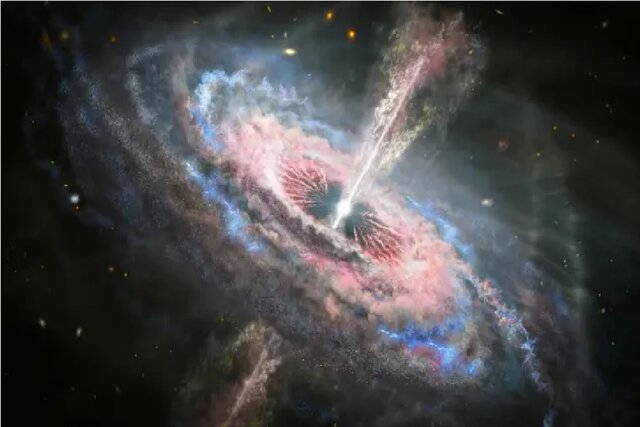

Preposition: For each; per.
Noun: A topology name.
Noun: which has mass but which does not readily interact with normal matter except through gravitational effects.
Adverb: Beyond all others.
Preposition: For each; per.
Noun: A topology name.
Dark matter and ordinary matter can interact without gravity!
Why is dark matter associated with the adjective “dark”? Is it because it harbors some evil forces of the universe or hidden secrets that scientists don’t want us to know? No, it is not. Such fanciful assumptions may sound appealing to a conspiracy theorist, but they are far from the truth.
Dark matter is called dark because it does not interact with light. So when dark matter and light collide, they pass each other. This is also why scientists have not been able to detect dark matter until now; it does not react to light.
Although it has mass and mass creates gravity, this means that dark matter can interact with normal matter and vice versa. Such interactions are rare, and gravity is the only known force that causes these two forms of matter to interact.
However, a new study suggests that dark matter and ordinary matter interact in ways other than gravity.
If this theory is correct, it shows that our existing models of dark matter are somewhat wrong. In addition, it can lead to the development of new and better tools for the detection of dark matter.
Read more: There is more than one way for planets to be born
A new missing link between dark and ordinary matter
Dark matter is believed to have about five times the mass of normal matter in our universe, which helps hold galaxies together and explains some of the motions of stars that don’t make sense based on the presence of visible matter alone.
For example, one of the strongest lines of evidence for the existence of dark matter is the observation of rotation curves in galaxies, which show that stars at the outer edges of spiral galaxies rotate at rates similar to those near the center. These observations indicate the presence of an invisible mass.
Also, for their study, the researchers studied six ultra-dim dwarf (UFD) galaxies located near the Milky Way. However, in terms of their mass, these galaxies have fewer stars than they should. This means they are mostly made up of dark matter.
According to the researchers, if dark matter and normal matter interact only through gravity, the stars in these UFDs should be denser in the centers and more spread out toward the edges of the galaxies. However, if they interact in other ways, the star distribution looks different.
The authors of the study ran computer simulations to investigate both possibilities. When they tested this for all six ultra-dim dwarf (UFD) galaxies, they found that the distribution of stars was uniform, meaning that the stars were spread evenly across the galaxies.
This was in contrast to what is generally observed for gravitational interactions between dark matter and normal matter.
What causes this interaction?
The results of the simulations showed that gravity is not the only force that can make dark matter and normal matter interact. Such an interaction has never been observed before, and it could change our understanding of dark matter and dark energy.
However, this study has a major limitation. What caused the interaction between the two forms of matter is still a mystery. While the current study provides tantalizing hints of a novel interaction, its exact nature and underlying causes remain unknown. Hopefully, further research will clarify the details of such interactions.
This study was published in The Astrophysical Journal Letters.


Ancient humans survived the last ice age just fine


iPhone 16 Pro Review


Why is the colon cancer increasing in people younger than 50?


Why is it still difficult to land on the moon?


Biography of Geoffrey Hinton; The godfather of artificial intelligence


The Strawberry Project; The OpenAI artificial intelligence model


Everything you need to know about the Windows Blue Screen of Death


Starlink; Everything you need to know about SpaceX Satellite Internet


There is more than one way for planets to be born


iOS 18 review: A smart update even without Apple’s intelligence
Popular
-



 Technology1 year ago
Technology1 year agoWho has checked our Whatsapp profile viewed my Whatsapp August 2023
-



 Technology1 year ago
Technology1 year agoSecond WhatsApp , how to install and download dual WhatsApp August 2023
-



 Technology1 year ago
Technology1 year agoHow to use ChatGPT on Android and iOS
-



 AI2 years ago
AI2 years agoUber replaces human drivers with robots
-



 Technology1 year ago
Technology1 year agoThe best Android tablets 2023, buying guide
-



 Technology1 year ago
Technology1 year agoThe best photography cameras 2023, buying guide and price
-



 Humans2 years ago
Humans2 years agoCell Rover analyzes the inside of cells without destroying them
-



 Technology1 year ago
Technology1 year agoHow to prevent automatic download of applications on Samsung phones


